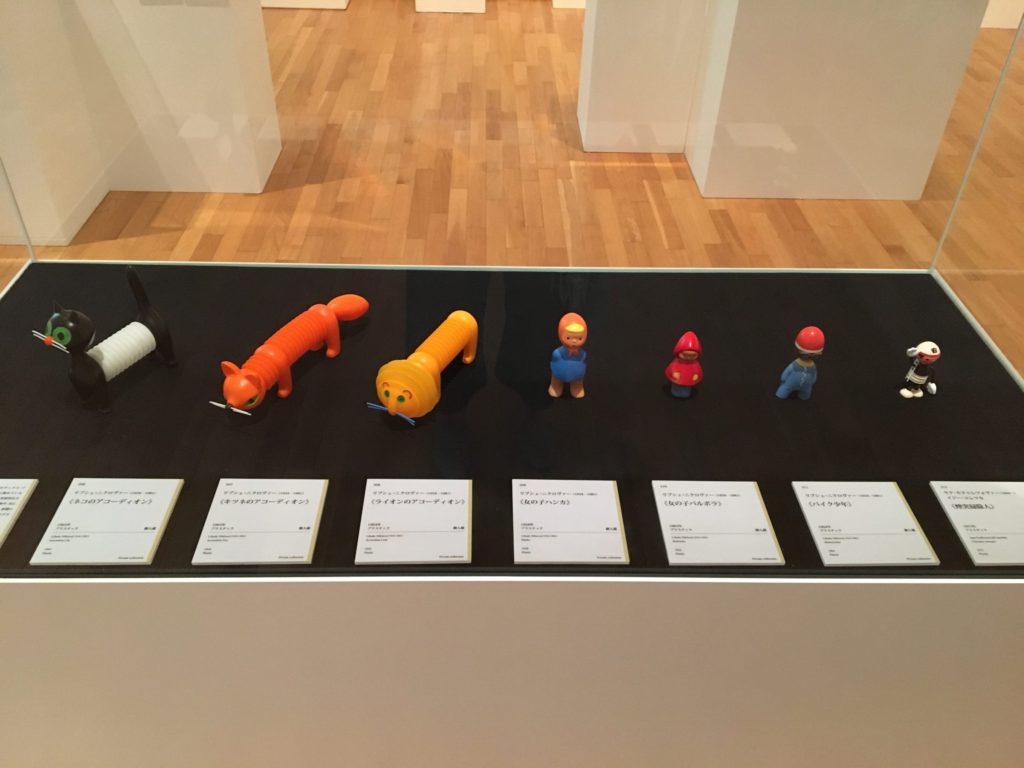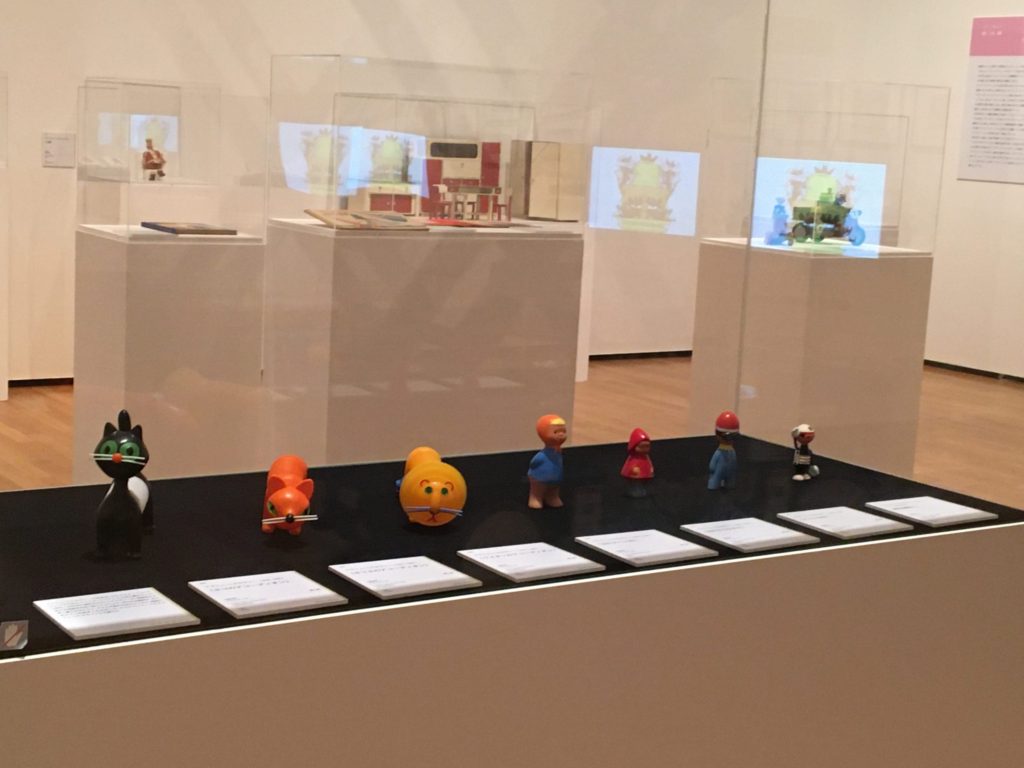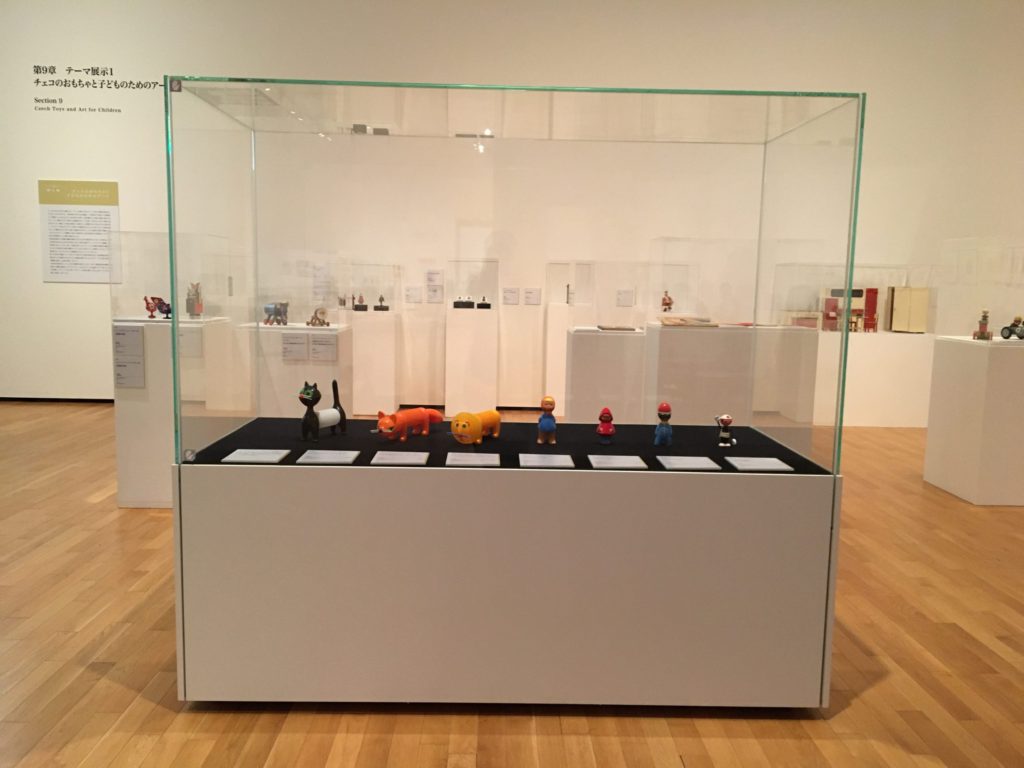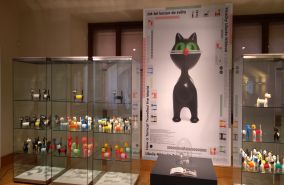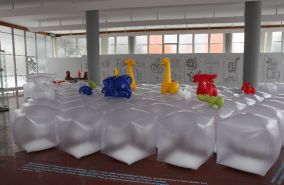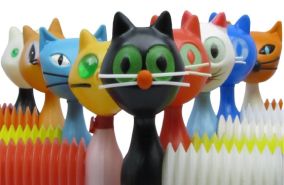MUSEUMS AND GALLERIES
Exhibitions
Libuše Niklová’s work has been featured in various exhibitions for over 60 years. With the exception of three traveling exhibitions in 2010 and 2011, there are only a few exhibits at each exhibition. A larger collection can be seen only in Napajedla, in the city museum. We now have a roughly five times larger collection of Libuše Niklová’s work and we want to share it with the public. So we are planning traveling exhibitions in the Czech Republic and abroad. Follow us for more information.
- Current exhibitions
- Permanent exhibitions
- Future exhibitions
- Exhibitions for rent
- History of exhibitions
Current exhibitions
Here you will find basic information about our current exhibitions.
Permanent exhibitions
So far there is only one permanent exposure of Libuše Niklová‚s work with a significant amount of original pieces.
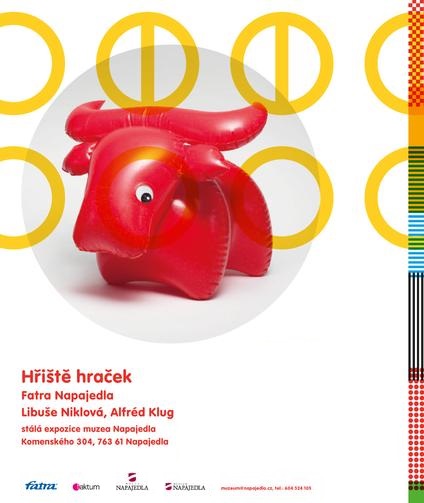
Hřiště hraček - Playground of Toys
The unique permanent exhibition of toys by Libuše Niklová and Alfréd Klug was designed for the Muzeum Napajedla by the artist Petr Nikl. The work of the designers from Fatra Napajedla, whose originality surpassed the usual toy production in Czechoslovakia in the 1950s and 1970s, is presented here in a pleasant form. years and even many of today's products. In the exhibition, you will find rubber figures from Gumotex Břeclav, the famous inflatable elephant and buffalo, or accordion-whistling toys led by the iconic Líba the Tomcat. The playful concept is complemented by the large-scale game "Man, don't be angry!", a touch game, or the fairy tale The Tomcat's Friends.
- Date of event: Permanent exposure
- Venue: Muzeum Napajedla, Napajedla

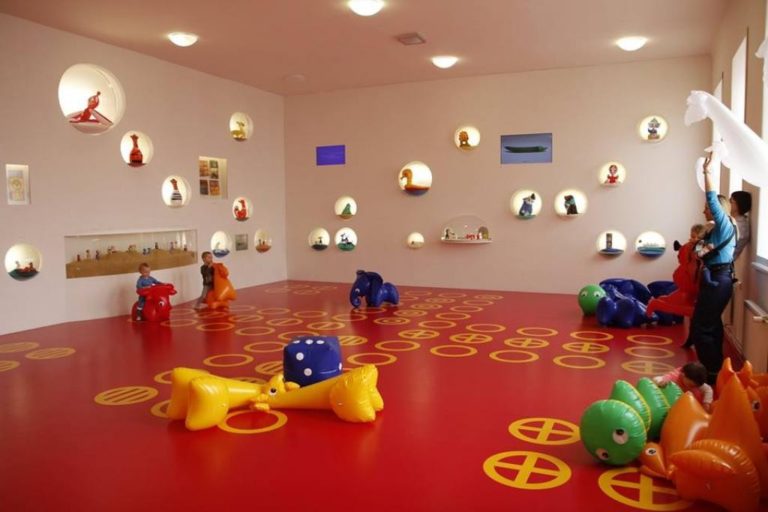
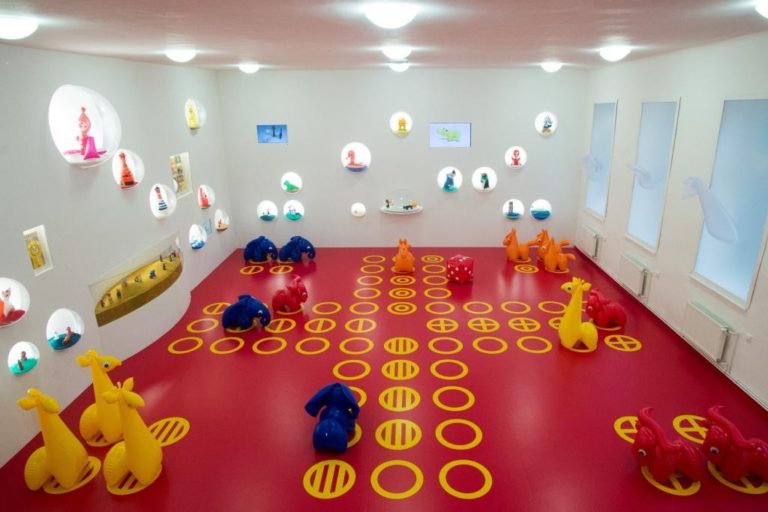
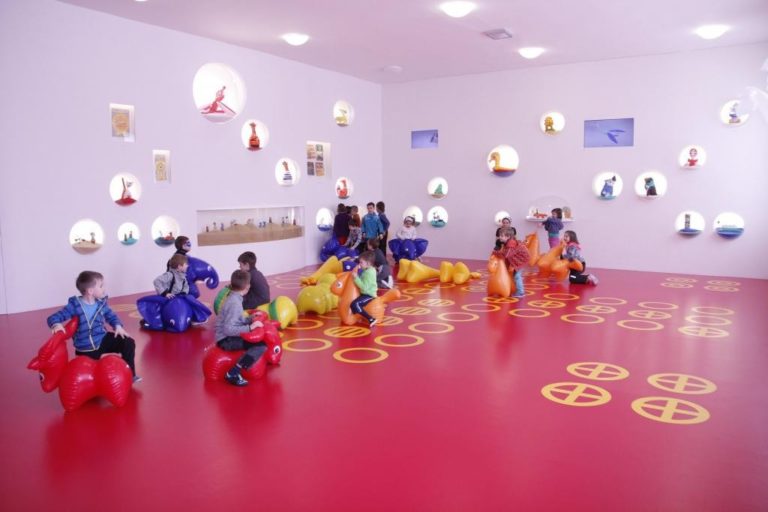

L’Avènement des plastiques - The advent of plastics
From the turn of the 1950s and 1960s, the furniture industry seized on products derived from petroleum: plastics. Attractive for their low cost, the use of ABS (Acrylonitrile Butadiene Styrene), polyethylene and other thermoplastic resins marked the introduction of new materials into the world of design. These synthetic derivatives are strong, light and lend themselves easily to color treatment. In Alain Resnais' film Le Chant du styrène (1958) the qualities of petroleum are celebrated as the embodiment of a magic liquid allowing limitless production. However, if the materials are very cheap, the development of the molds is expensive. The manufacture of objects thus only becomes profitable on an industrial scale, thanks to mass production. It is then the beginning of a production in multiple fields: from furniture to kitchen utensils, passing by the car like the famous Méhari.
- Date of event: Permanent exposure
- Venue: Musée des Arts Décoratifs, Louvre, Paris

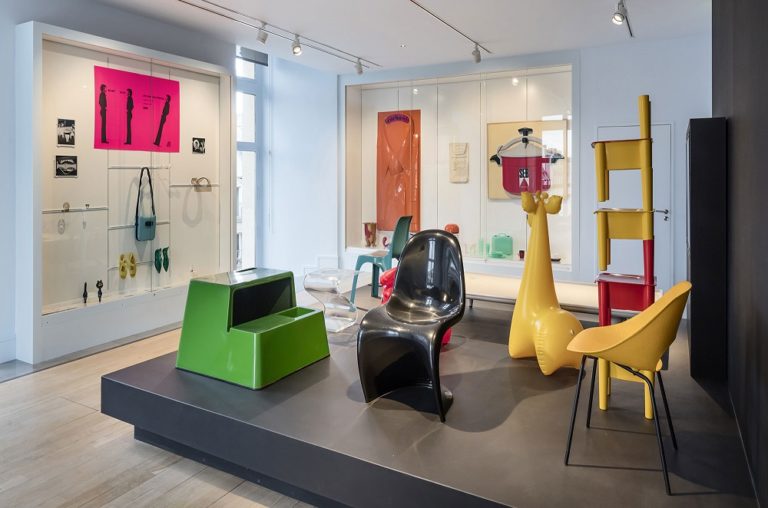
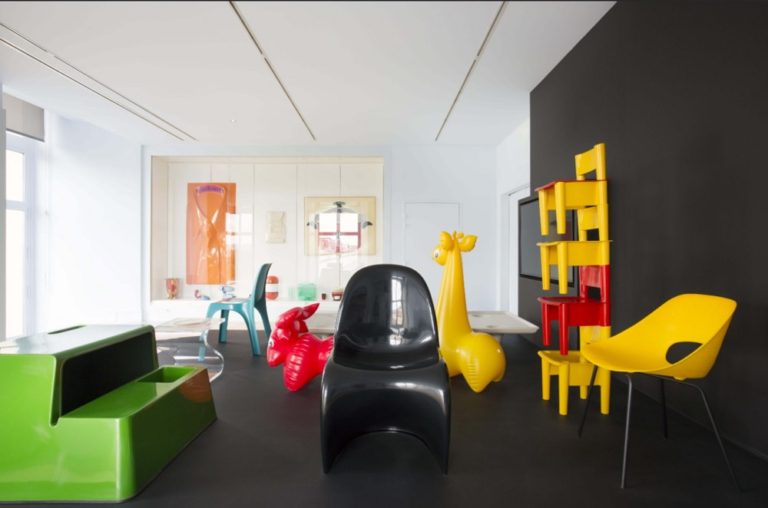
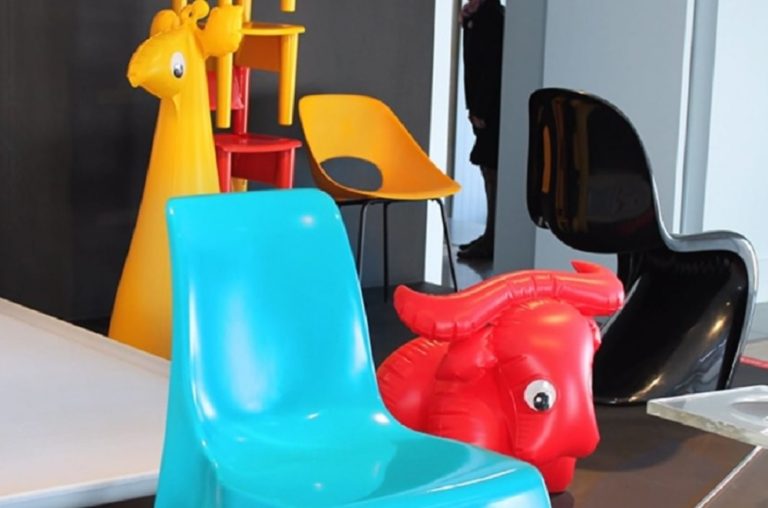
Future exhibitions
Here you will find basic information about our future exhibitions. We are currently negotiating several interesting destinations both in the Czech Republic and abroad. If you are interested in organizing an exhibition of Libuše Niklová’s work in your museum or gallery, do not hesitate to contact us.
Exhibitions for rent
Are you interested in organizing an exhibition of Libuše Niklová’s work in your museum or gallery? Do not hesitate to contact us, we currently have two exhibitions on offer, but there will be more in time, so follow us for new projects.
Important exhibitions
Plastique ludique
The cheerful plastic toys of artist Libuše Niklová captivated Paris. The accordion tomcat, inflatable elephant and other toys by the artist Libuše Niklová were presented for the first time in Paris at an exhibition at the Museum of Decorative Arts in the Louvre. The exhibition was called Plastique ludique – Cheerful plastic. Over 120 toys, plaster designs and drawings by Libuše Niklová were on display.
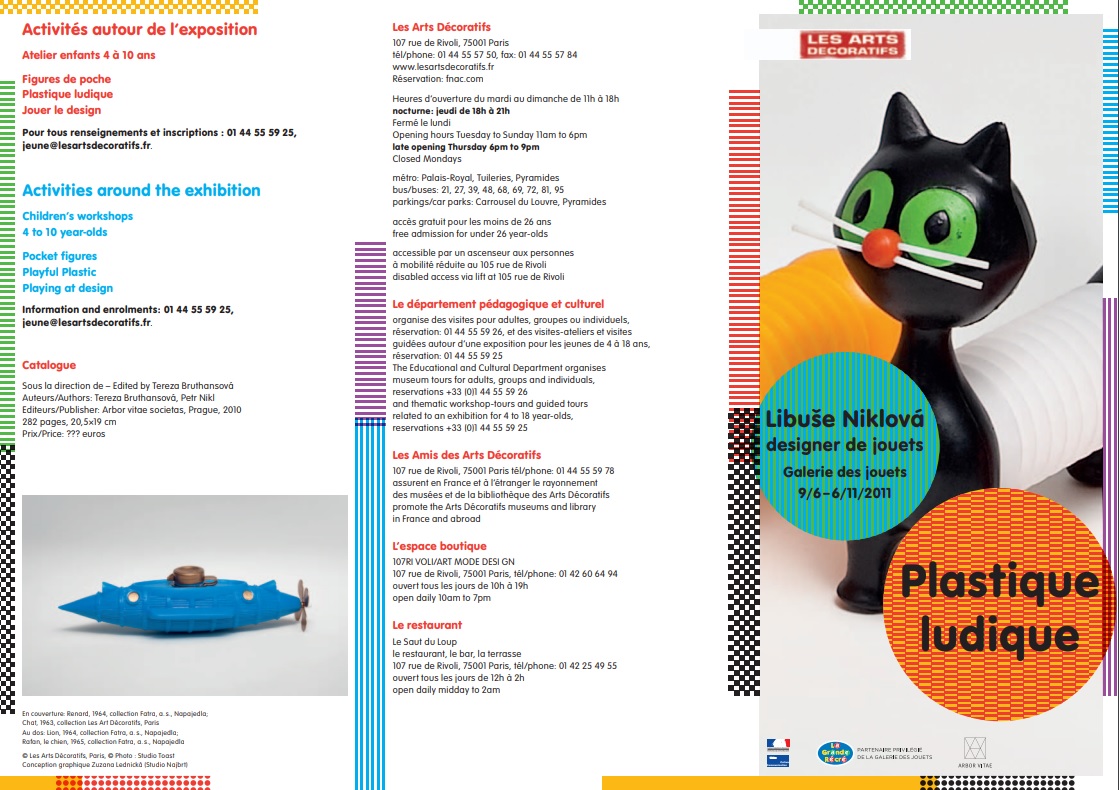
Musée des Arts Décoratifs, Louvre, Paris, France
An almost five-month-long exhibition of Libuše Niklová's toys at the Museum of Decorative Arts, which is located in one of the wings of the Louvre Palace in Paris. A substantial article about the exhibition was published in Le Figaro and many other French magazines dealing with culture and design. The New York Times also mentioned the Paris exhibition of Libuše Niklová's work.
- Date of event: June 9th, 2011 - November 6th, 2011
- Venue: Musée des Arts Décoratifs, Louvre, Paris
- Attendance:

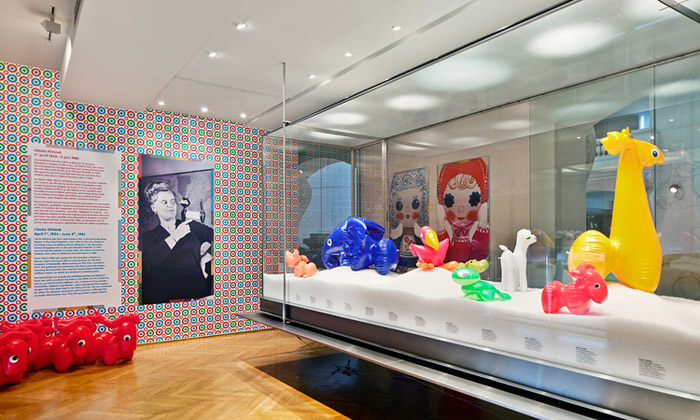
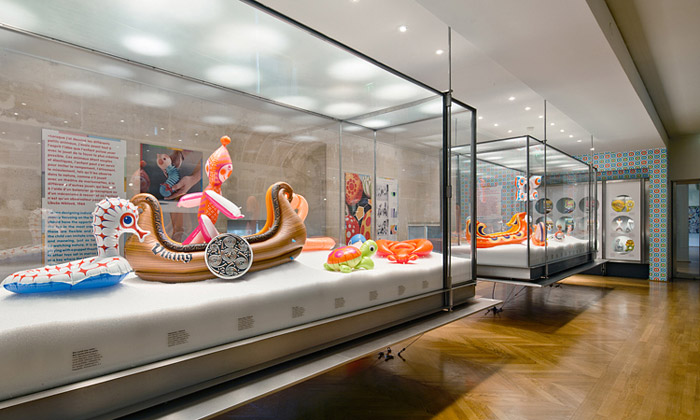
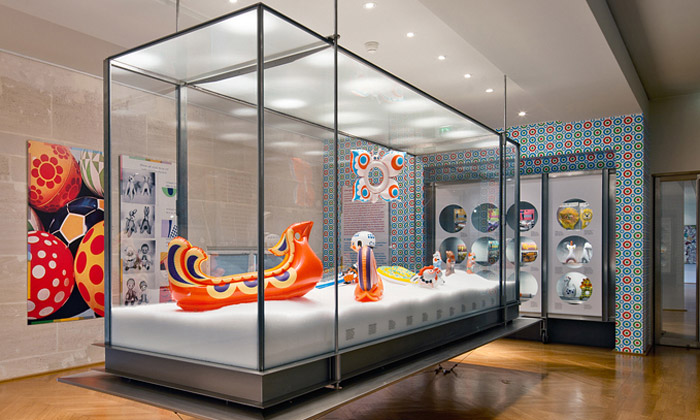
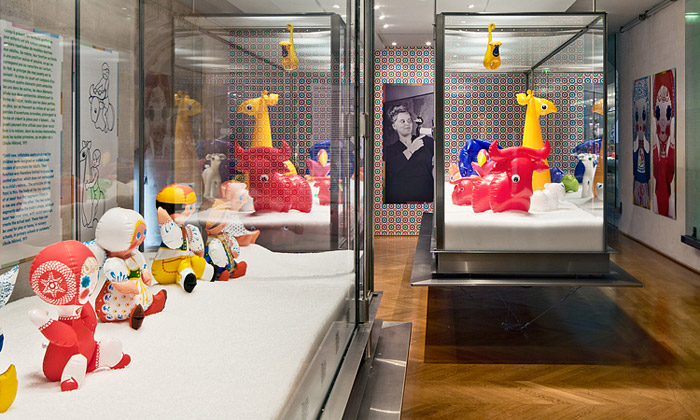

107Rivoli Boutique, Louvre, Paris, France
During the Plastique ludique exhibition, Libuše Niklová's inflatable toys, the giraffe, Haukola the buffalo and Vlastík the elephant, and Libuše Niklová's monograph book by Tereza Bruthansová were displayed in two shop windows in the library and the gift shop at the Museum of Decorative Arts in the Louvre in Paris.
- Date of event: June 9th, 2011 - November 6th, 2011
- Venue: 107Rivoli Boutique du Musée des Arts Décoratifs, Paris
- Attendance: ???
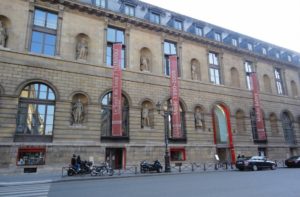
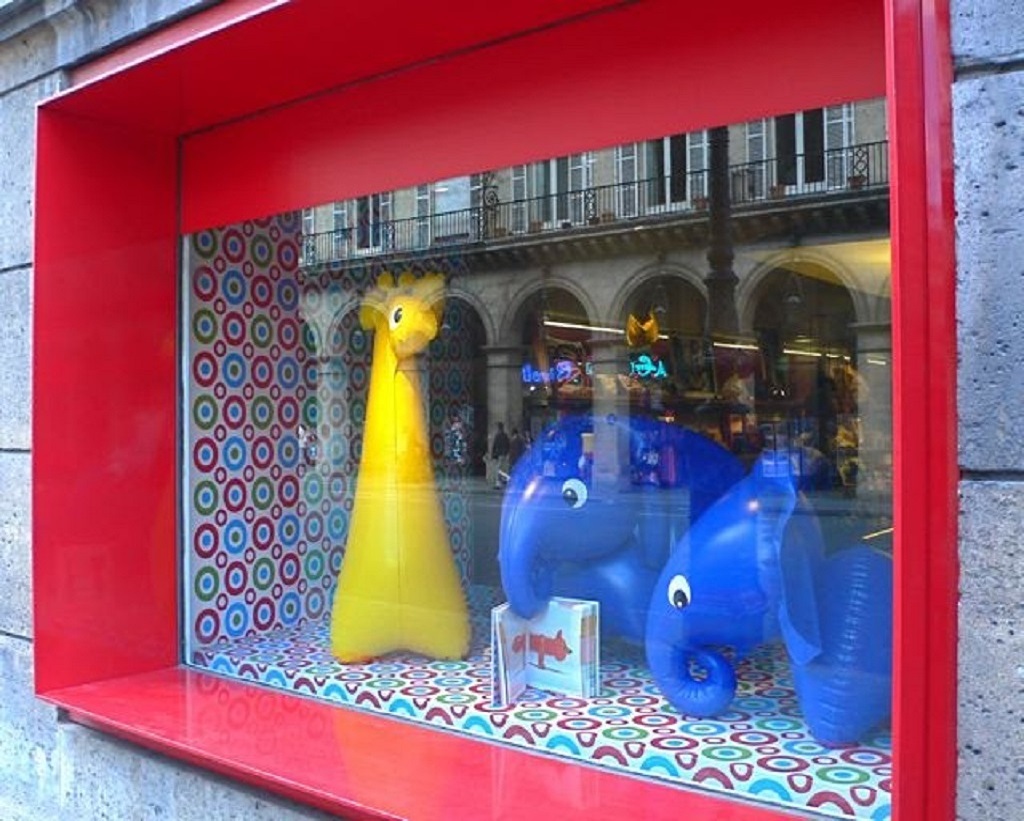
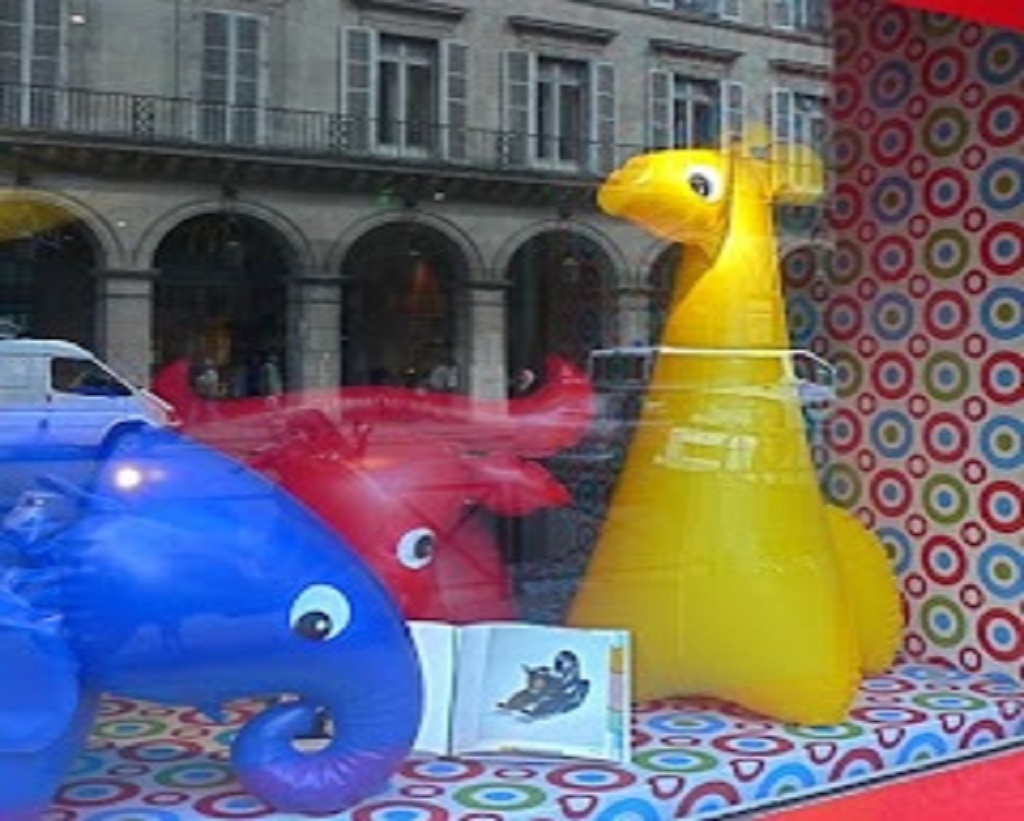
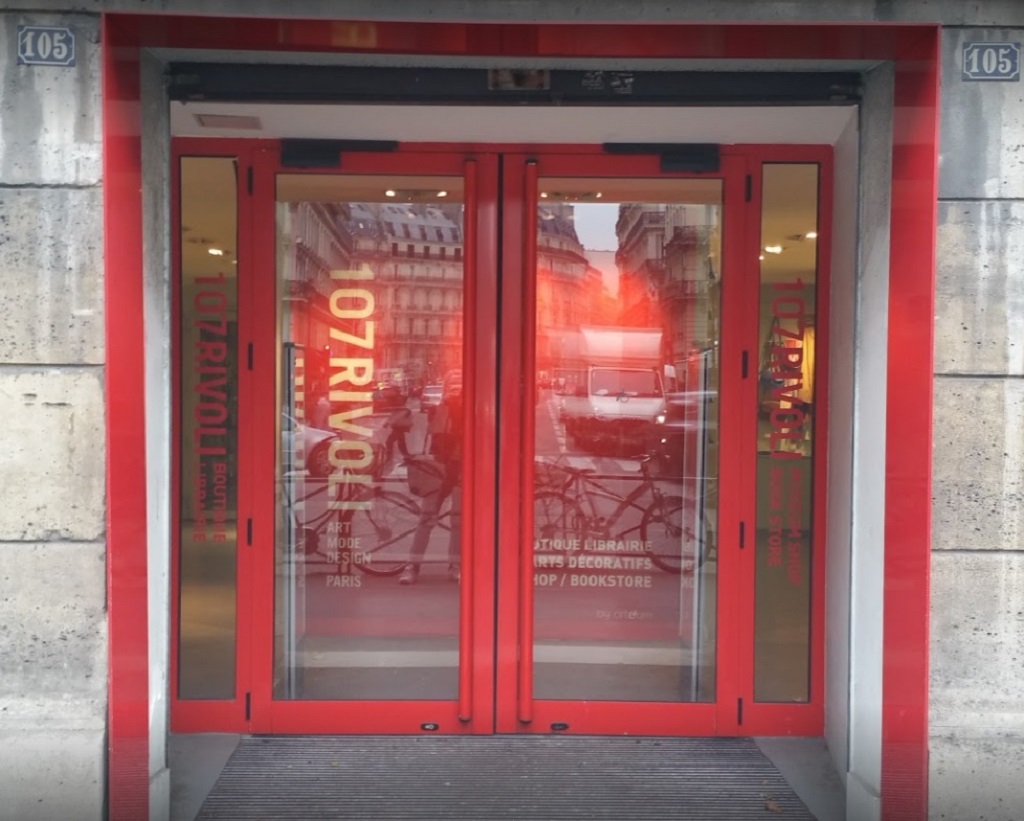
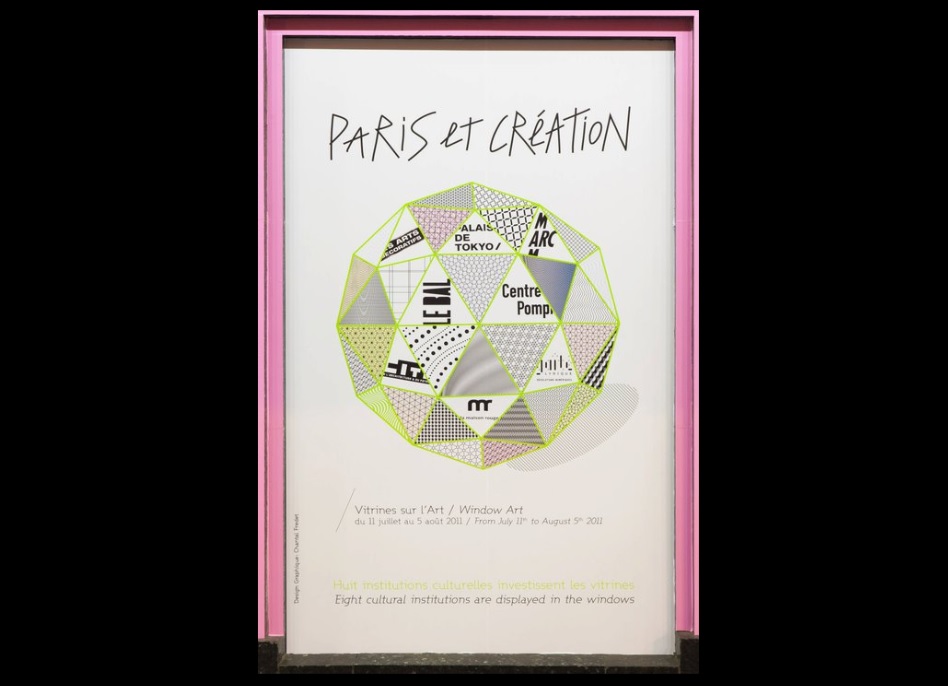
Galeries Lafayette, Paris, France
In one of the showcases in the famous luxury Galeries Lafayette on Boleuvard Haussmann, a herd of floating Haukola buffaloes was displayed as a banner for Libuše Niklova's Plastique ludique toy exhibition at the Louvre. This mini-exhibition was part of the Paris et Création event and there were 8 showcases, each referring to a different exhibition. Galeries Lafayette has several hundred thousand visitors a day, mostly tourists.
- Date of event: July 11th, 2011 - August 5th, 2011
- Venue: Galeries Lafayette, Haussmann Bd., Paris
- Attendance: several million
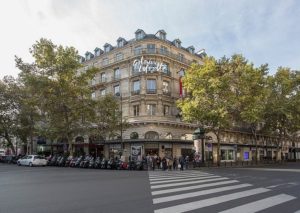
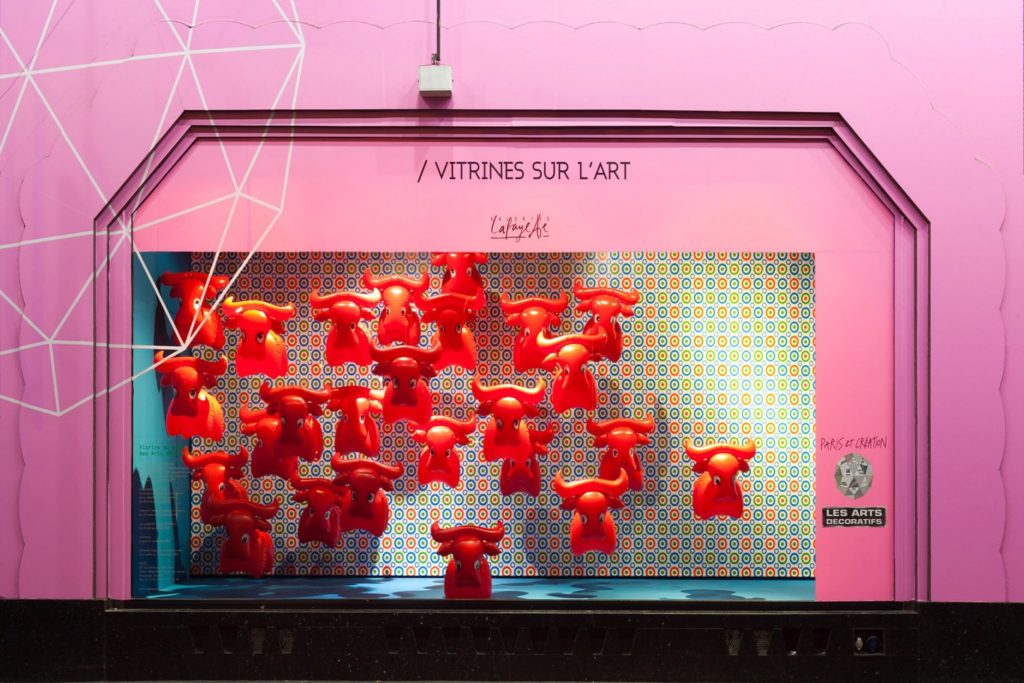
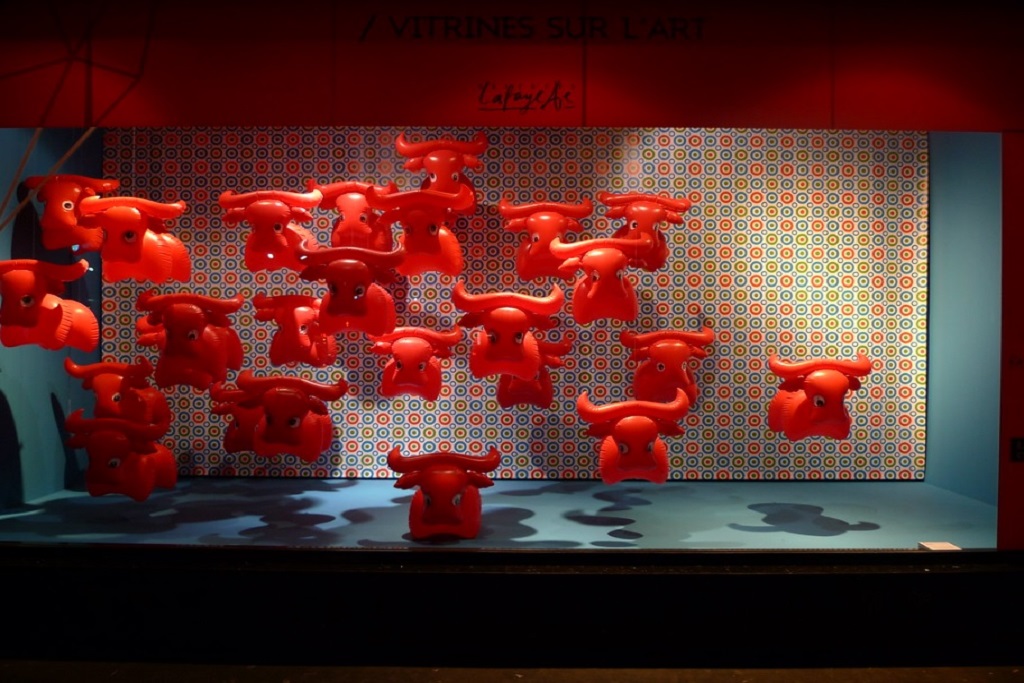
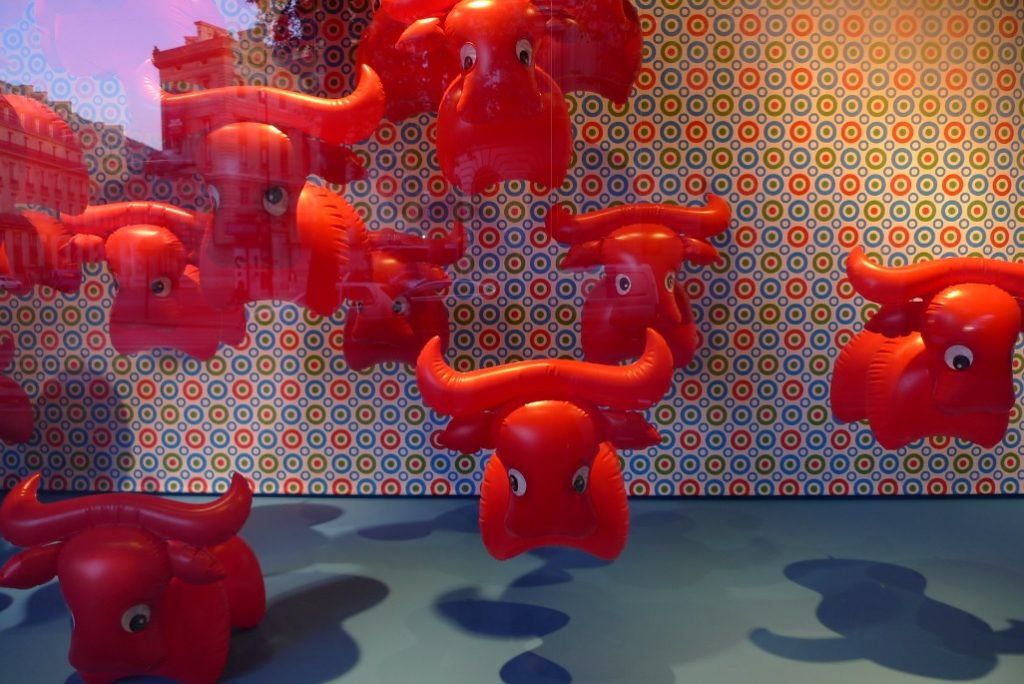
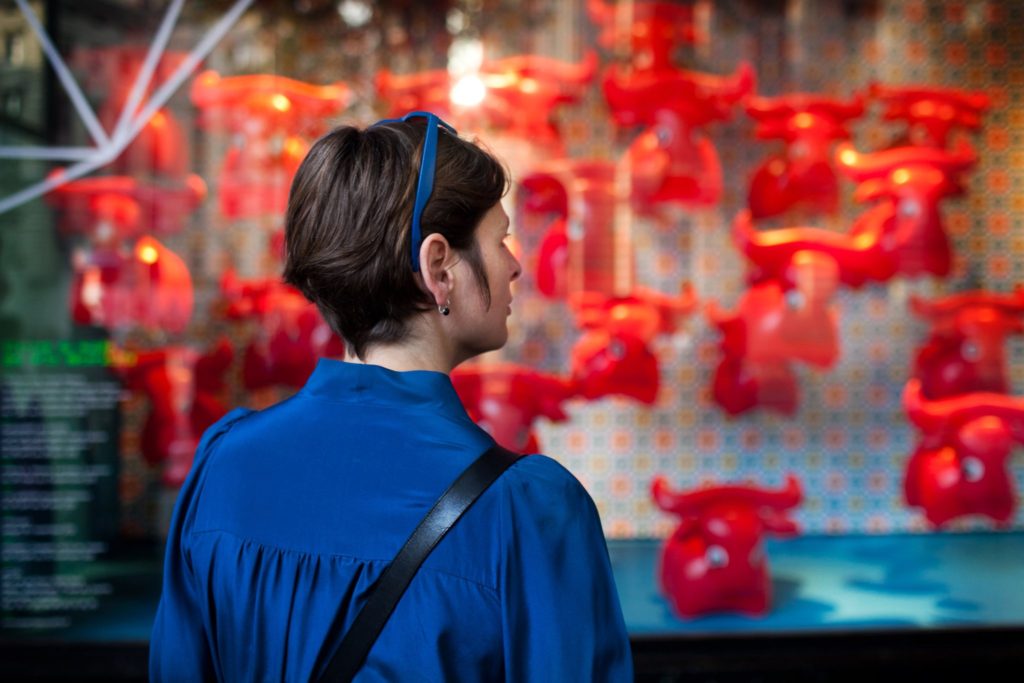
Century of the Child: Growing by Design, 1900-2000
An exhibition called The Century of the Child: Growing by design, 1900-2000. At this exhibition at the famous MoMA, the Museum of Modern Art in New York, over 500 objects, toys, photographs, drawings, etc. from authors from all over the world were exhibited. Several toys from the collections of the Museum of Decorative Arts in Prague were also on display, including several toys from the work of Libuše Niklová, for example the famous accordion tomcat, an inflatable giraffe, Vlastík the elephant or several rubber squeaky toys such as a dispatcher, a tamer or a doctor and a nurse. Libuše Niklová’s toys were on display in the section focused on reconstruction after the Second World War and the influx of products intended for children.
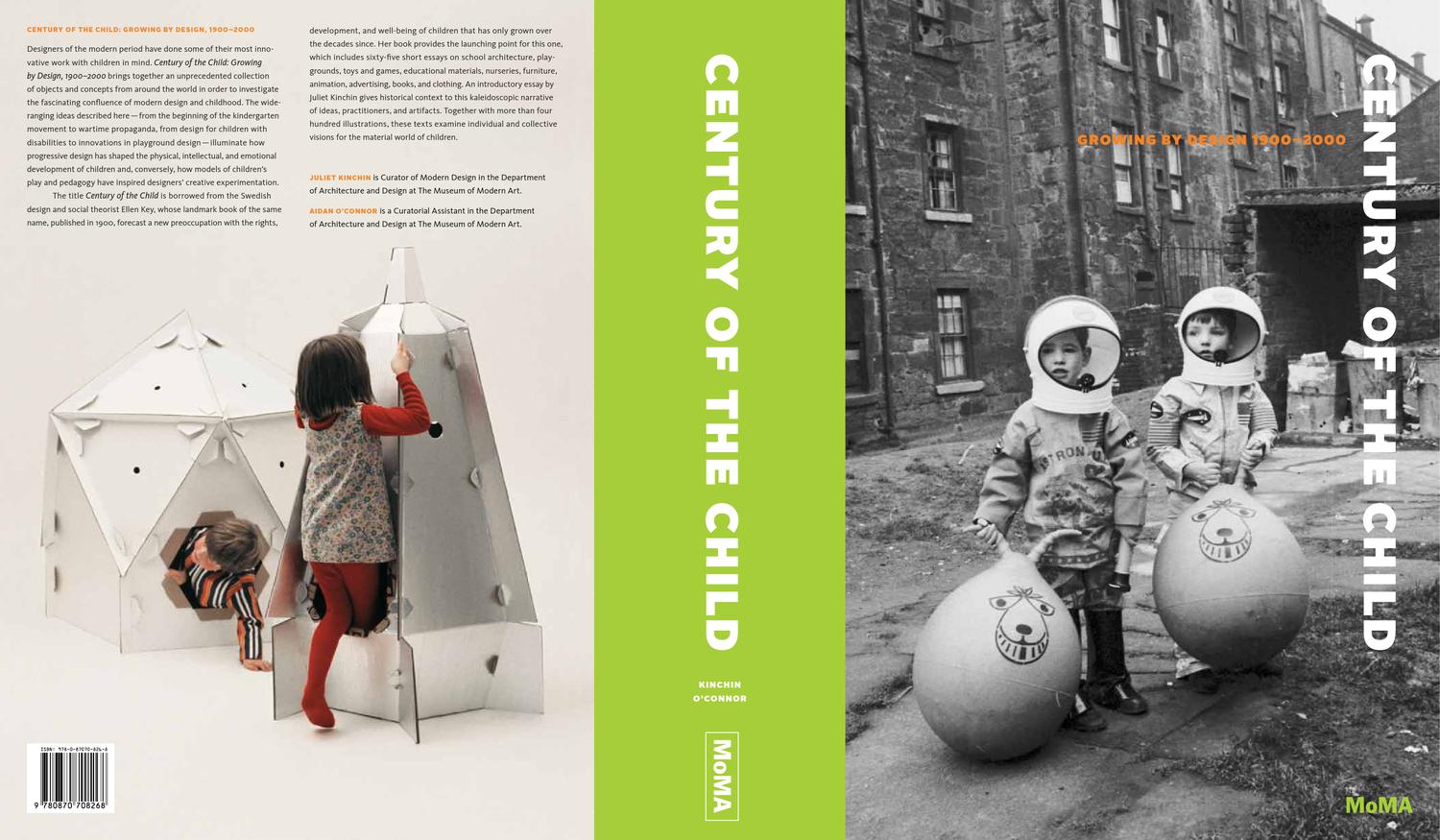
MoMA, New York, USA
The New York Museum of Modern Art organized the first retrospective exhibition dedicated to children's design. The exhibition, entitled The Century of the Child, looked back at the design of children's toys of the twentieth century, explored why modern art is so interested in it, and even looked for the beginnings of later trends in the design industry.
- Date of event: July 29th, 2012 - November 5th, 2012
- Venue: Museum of Modern Arts, New York
- Attendance:
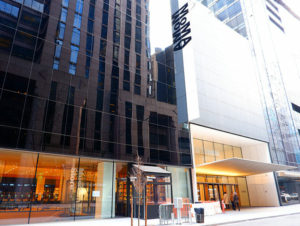
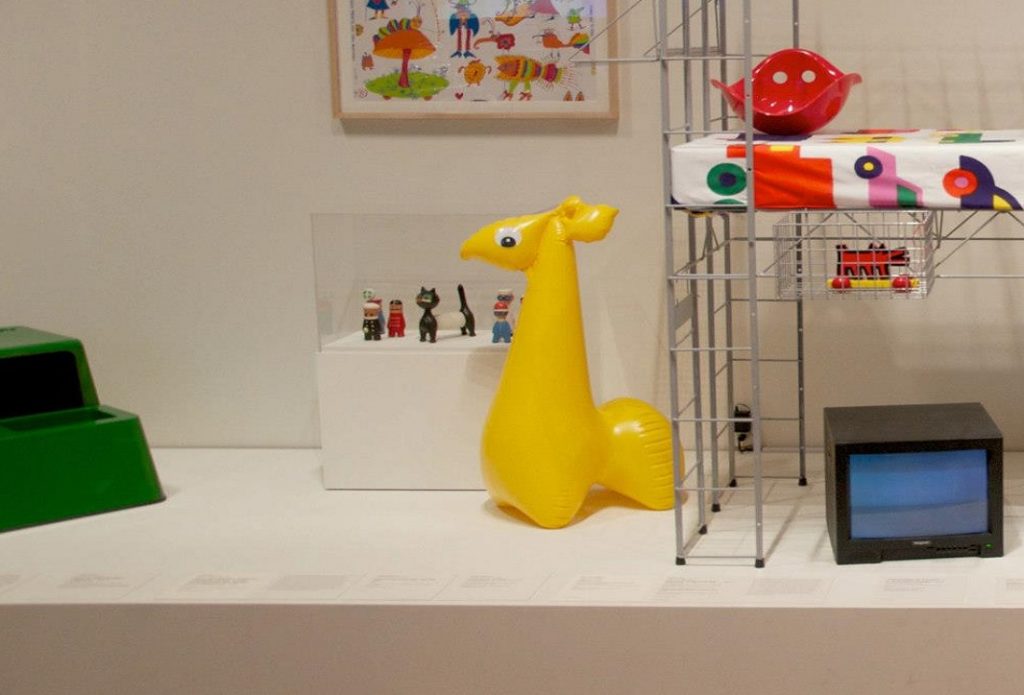
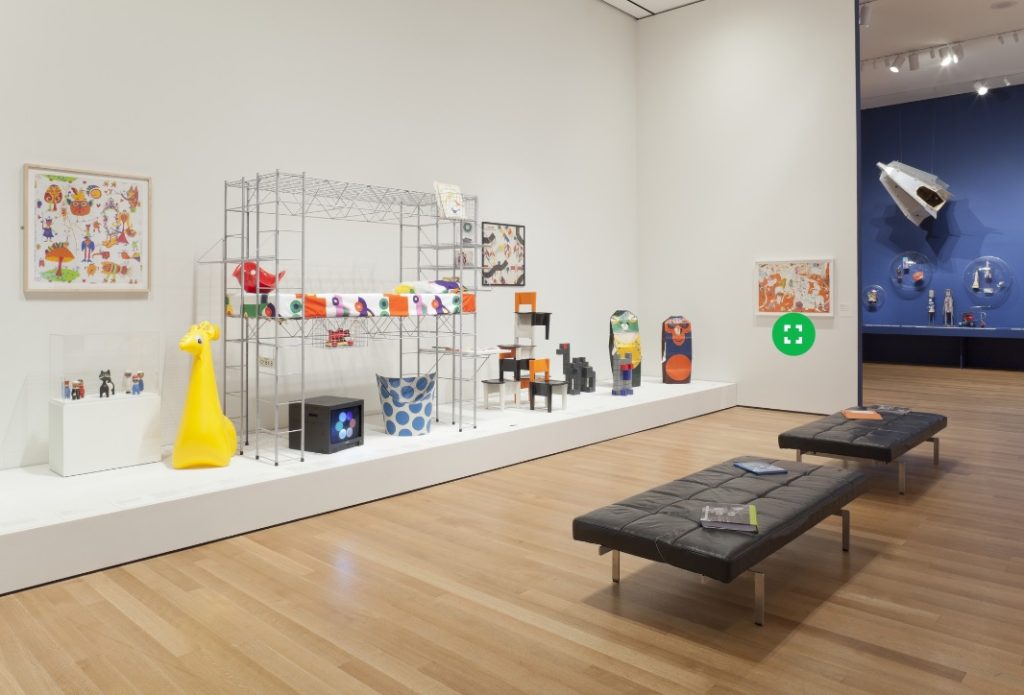
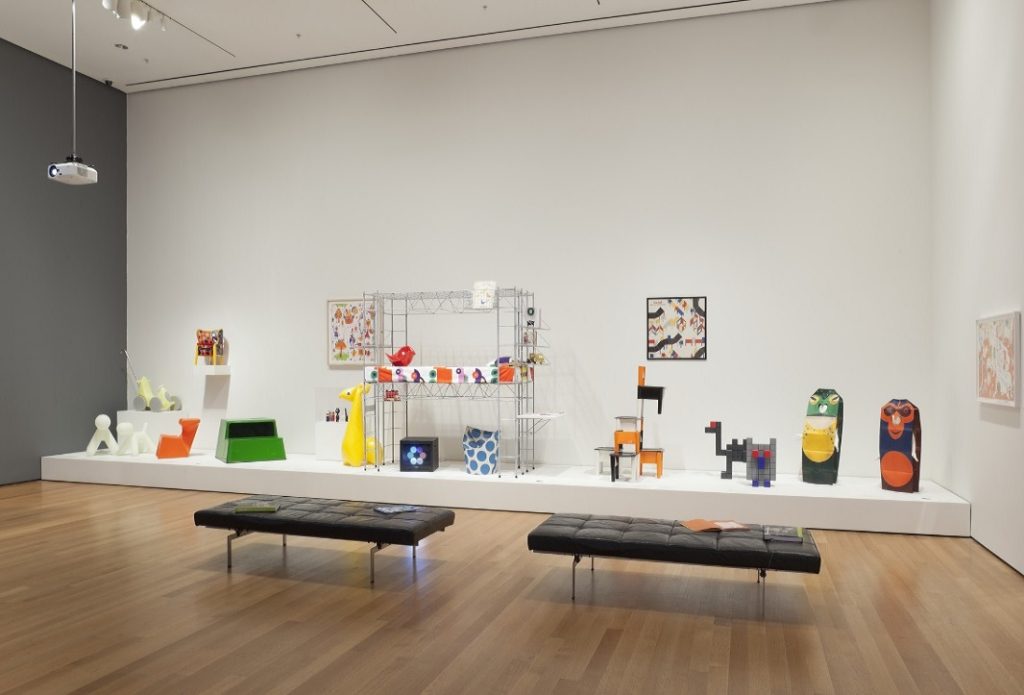
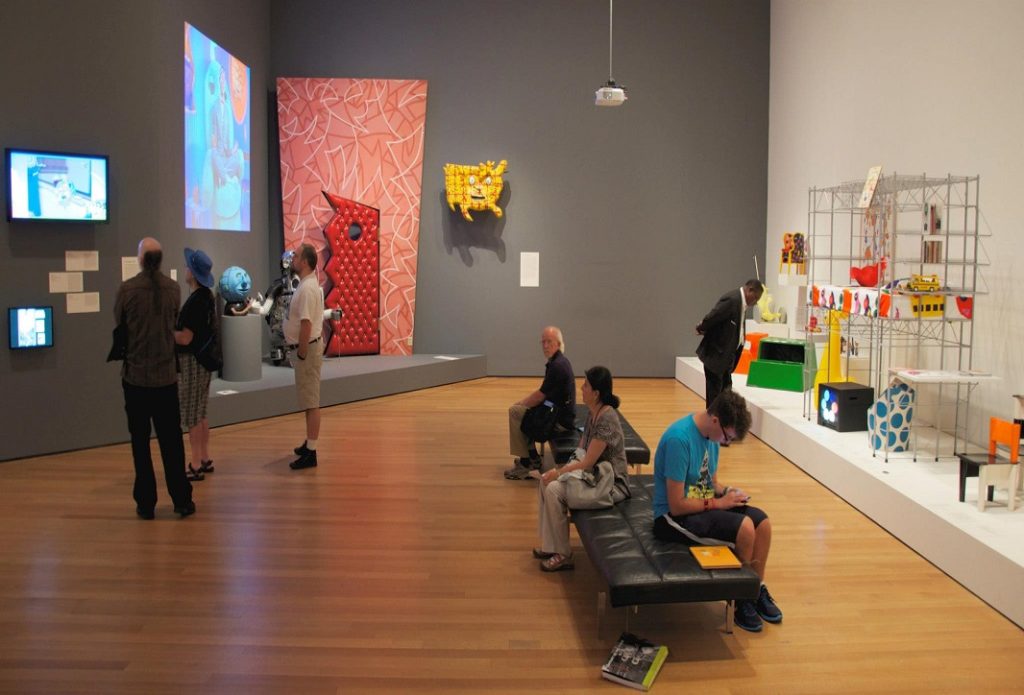
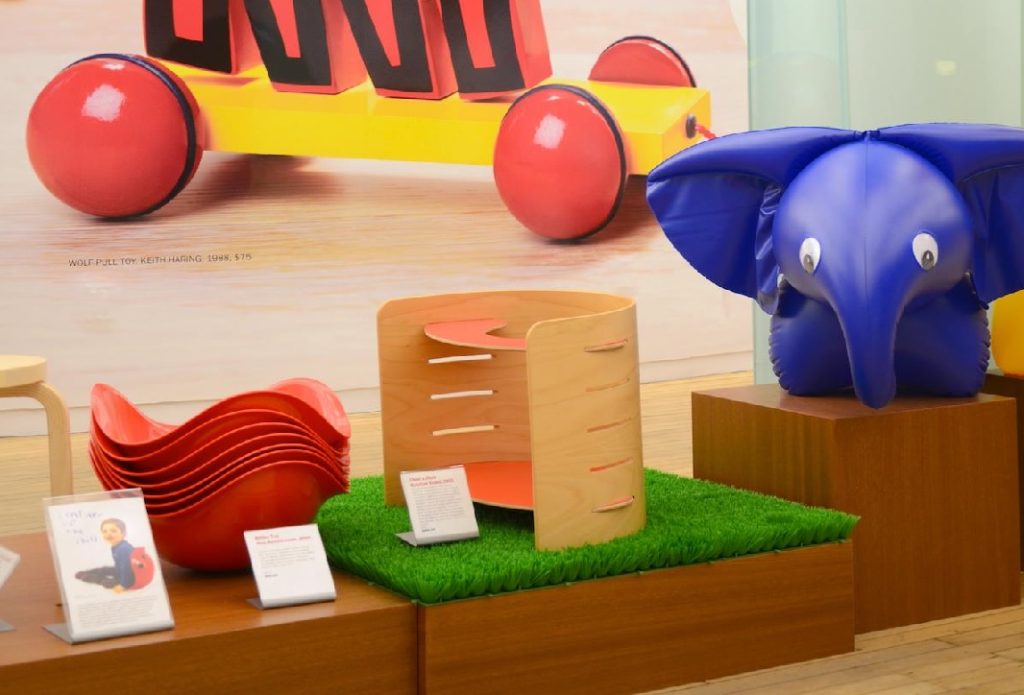
Designing Modern Women 1890-1990
An exhibition called Designing Modern Women 1890-1990. At this year-long exhibition at the famous MoMA, the Museum of Modern Art in New York were showcased only objects designed by women from around the world. Only items from the collections of the Museum of Modern Art, New York, including three toys by Libuše Niklová were on display. Her inflatable toys, Haukola the buffalo, Vlastík the elephant and the Giraffe were on display.

MoMA, New York, USA
Libuše Niklová appeared in New York at the Museum of Modern Art alongside such female design icons as Charlotte Perriand, who collaborated with the architect Le Corbusier or Lella Vignelli. The Designing Modern Women 1890–1990 exhibition lasted almost a year.
- Date of event: October 5th, 2013 - October 19th, 2014
- Venue: Museum of Modern Arts, New York
- Attendance:

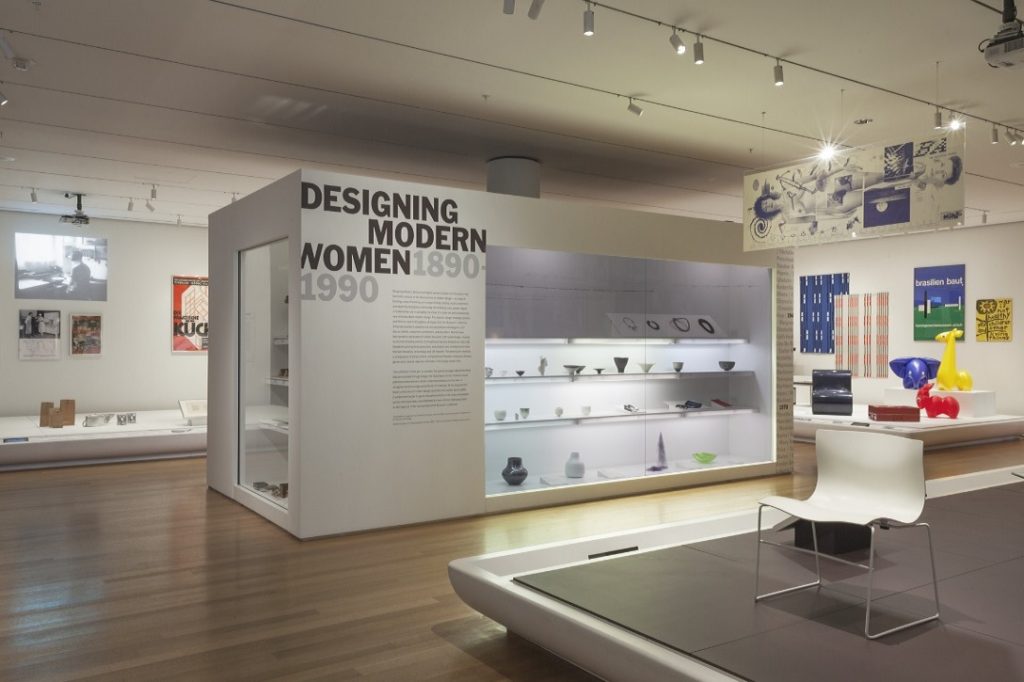
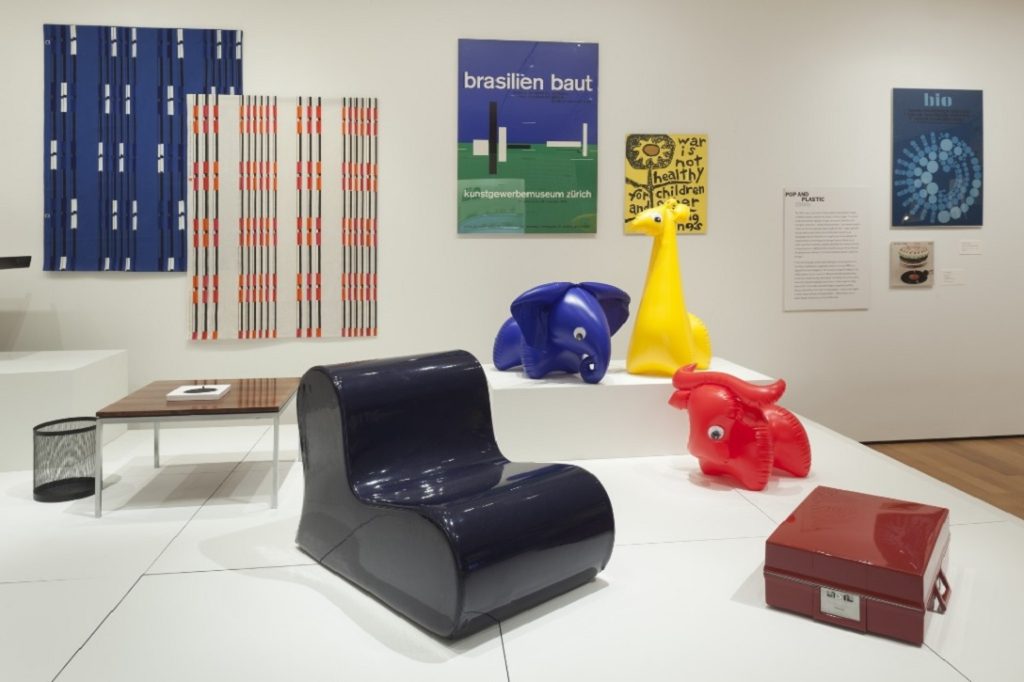
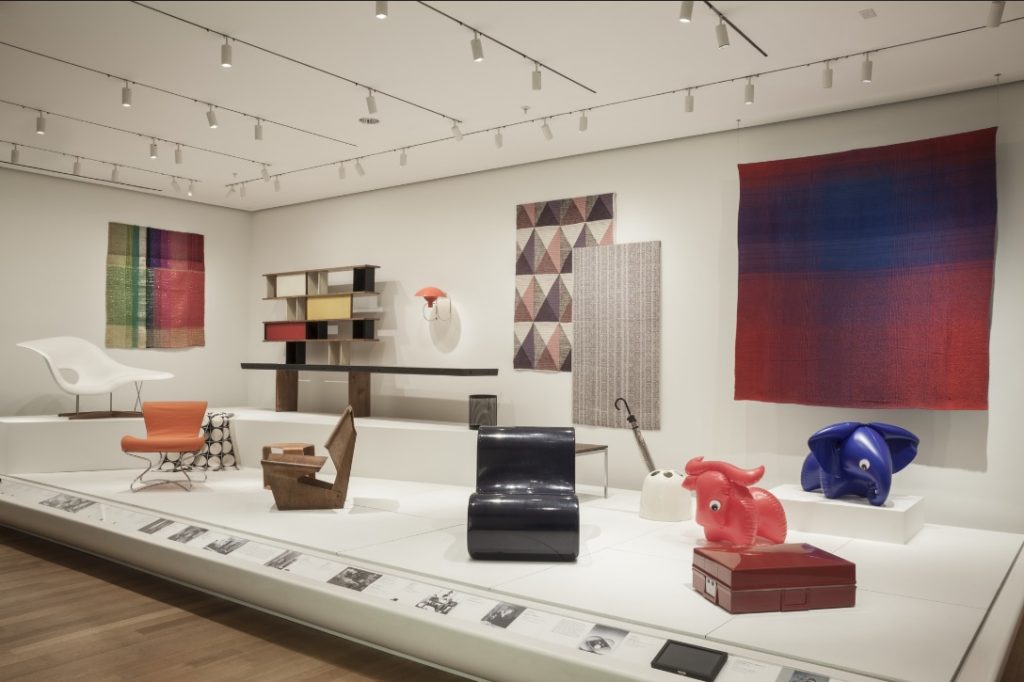
200 dm3 dechu
A two-month exhibition of the work of toy designer Libuše Niklova took place in the Museum of Decorative Arts in Prague and the House of Arts in Zlín. The retrospective entitled 200 dm3 dechu (200 dm3 of breath) (the name of which recalled the role played by air in Libuše Niklová’s original creations) presented the work of this exceptional designer and the author of nine patented inventions, from early designs to well-known realized objects. Over 120 toys, plaster designs and drawings by Libuše Niklová were on display here, for example, the rubber figurines that Libuše Niklová designed from the mid-1950s to the mid-1960s at Gumotex Břeclav. Her legendary accordion toys, leading by a tomcat, as well as inflatable sitting toys, which she designed in Fatra Napajedla, were also on display.
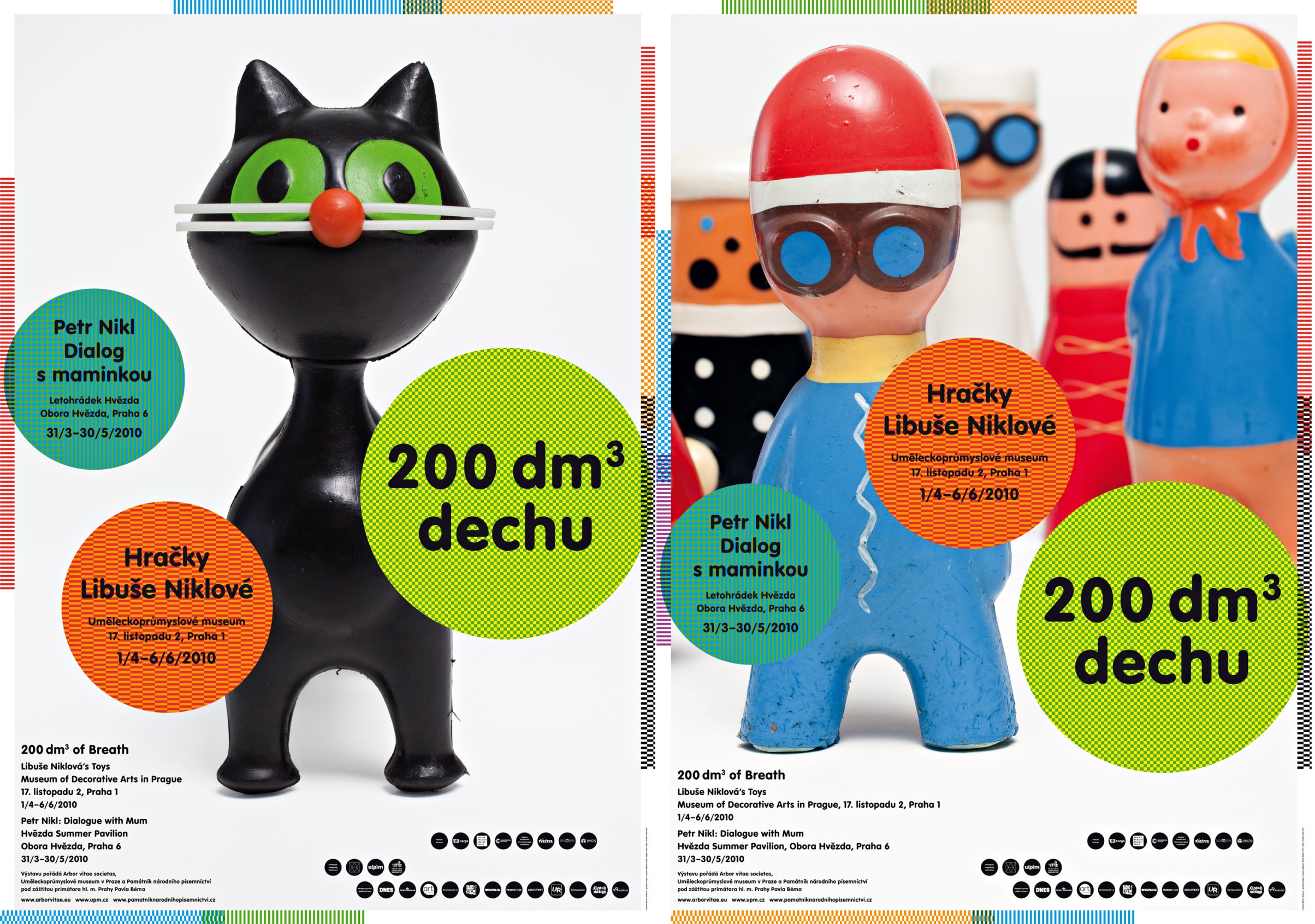
Museum of Decorative Arts, Prague
The lifelong work of the pioneer in the field of toys, Libuše Niklová, whose work far surpassed the toy production of the time, was on display at the Museum of Decorative Arts in Prague from April 1st to June 6th. One of the initiators of the exhibition aptly named 200 dm3 of breath was the designer's son Petr Nikl, who simultaneously created an exhibition of his own work in the premises of the National Literature Memorial.
- Date of event: April 1st, 2010 - June 6th, 2010
- Venue: Museum of Decorative Arts, Prague
- Attendance:
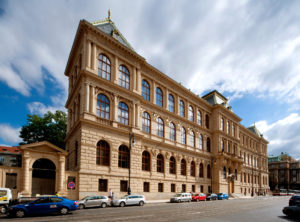
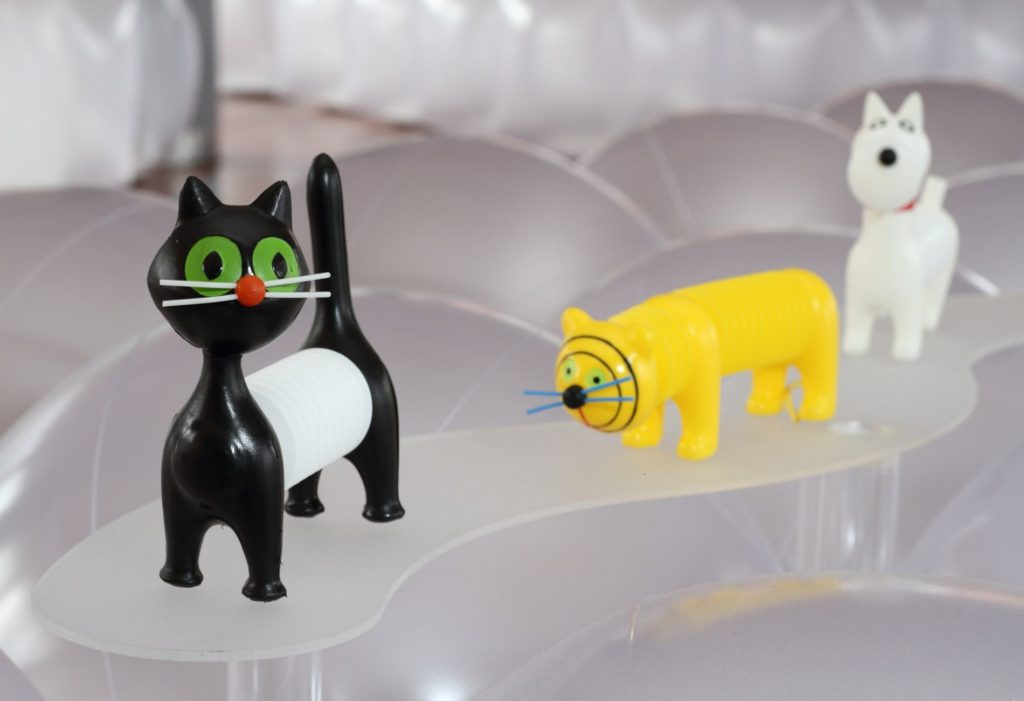
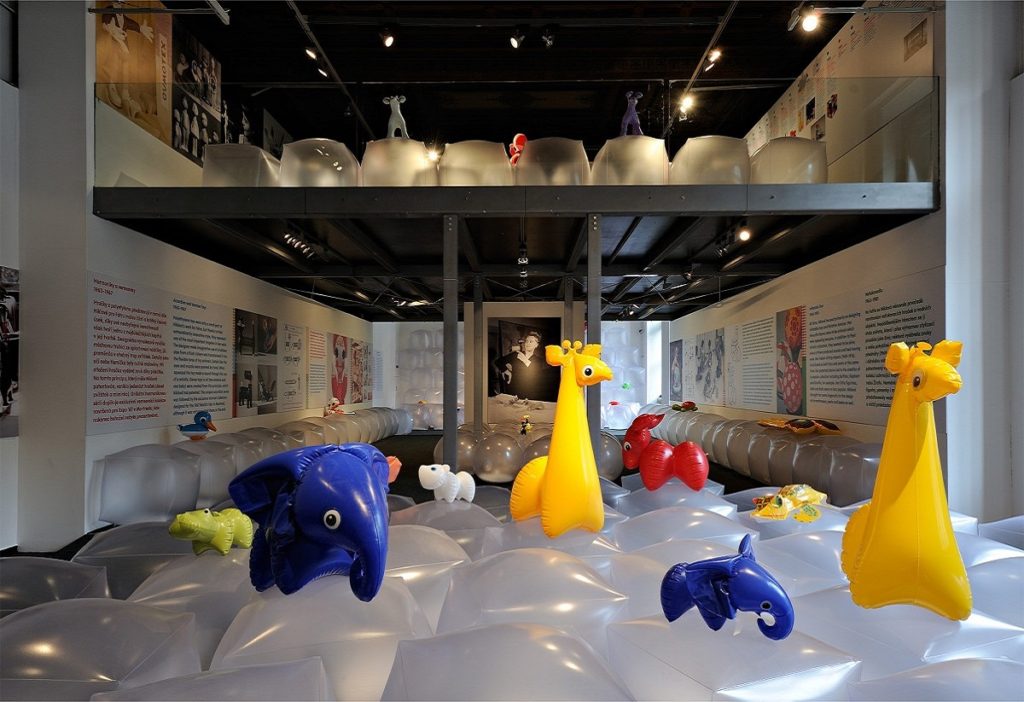
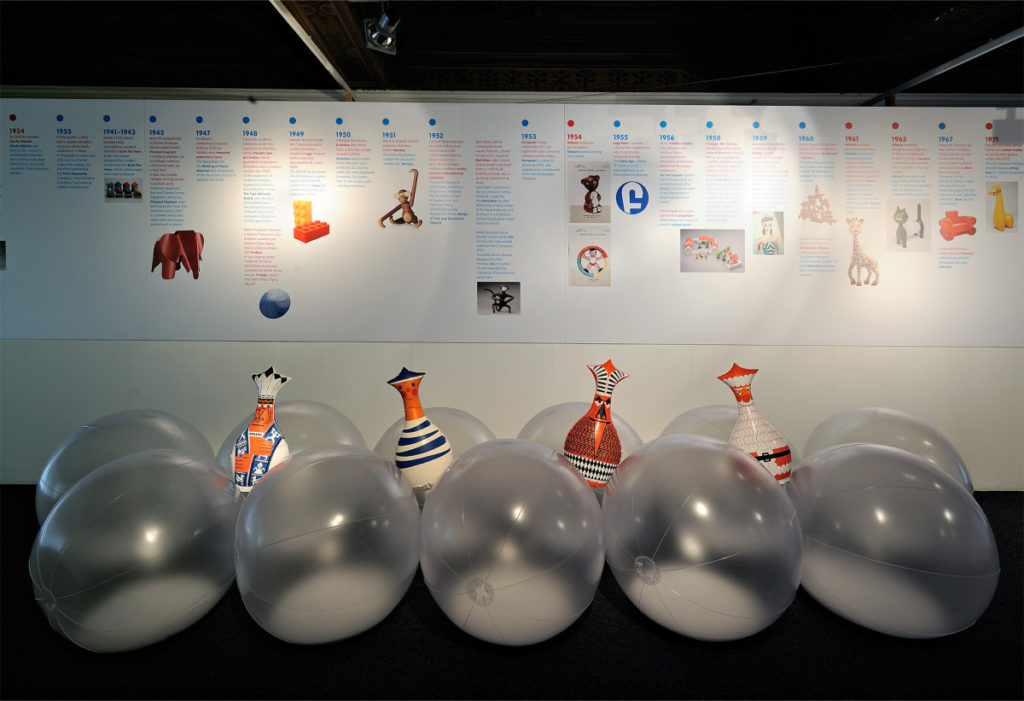
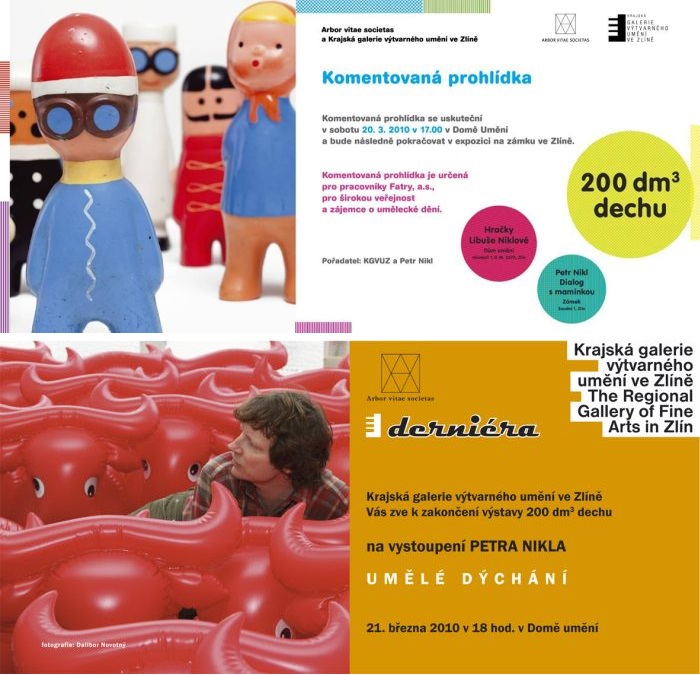
Regional Gallery of Fine Arts in Zlín, House of Arts, Zlín
The Regional Gallery of Fine Arts in Zlín, more precisely in the House of Arts, had an extremely successful exhibition of toys by designer Libuše Niklová called 200 dm3 of breath. 3000 people visited it. About 700 visitors will come to see the "Normal Exhibition", we consider it a success if we exceed the thousand mark, exhibition curator Martin Beníček told ČTK.
- Date of event: February 2nd, 2010 - March 21st, 2010
- Venue: Regional Gallery of Fine Arts, House of Arts, Zlín
- Attendance: 3 000

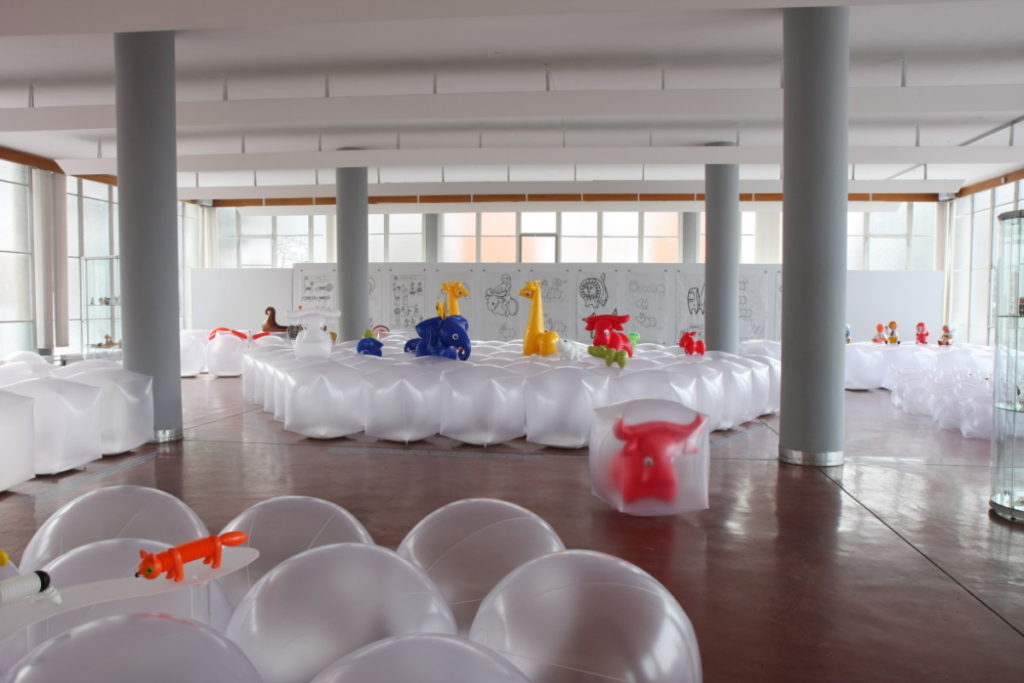
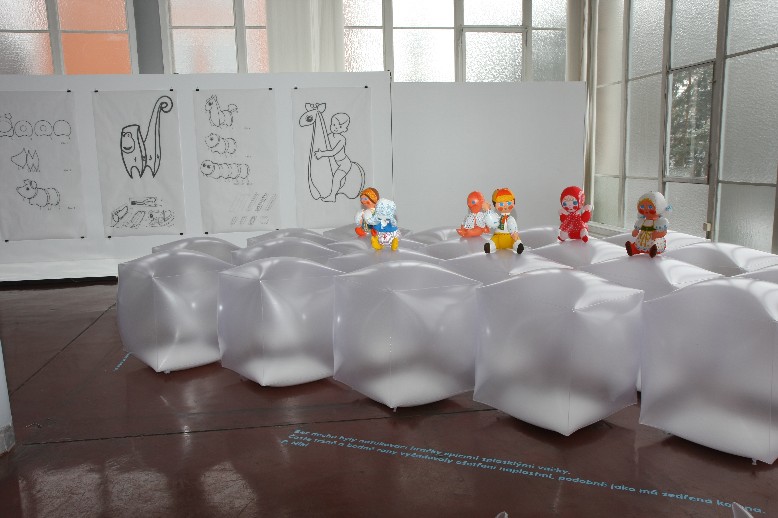
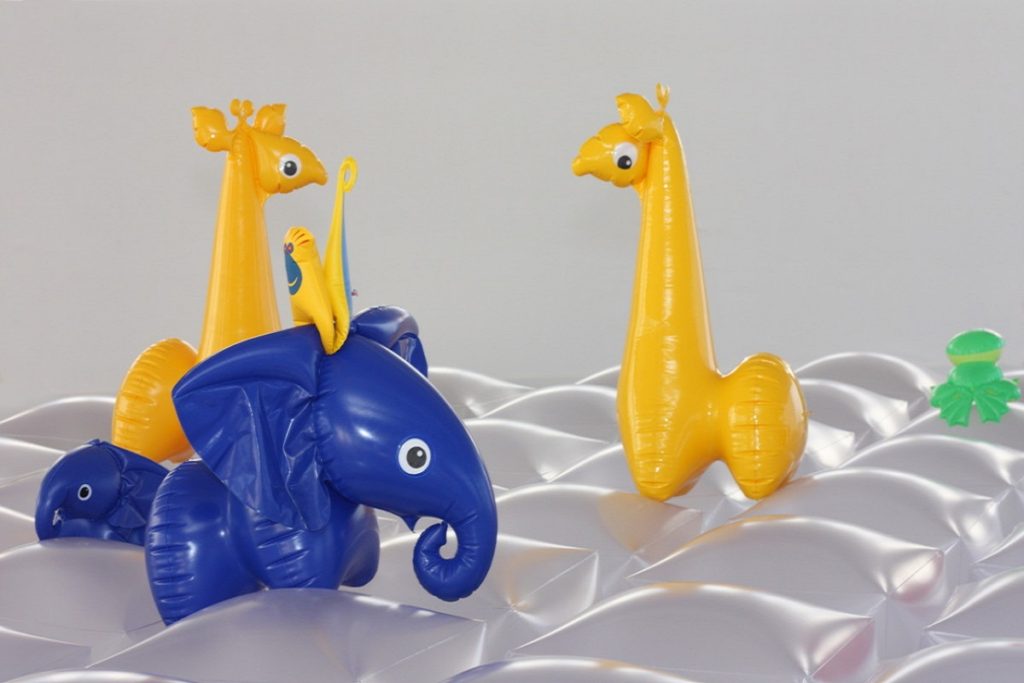
How a tomcat travelled the world: Libuše Niklová's toys and their foreign hybrids
The world premiere of a revealing exhibition from a unique collection presented copies of accordion toys designed by Libuše Niklová, together with the original series of animals. Her famous Tomcat from 1963 crossed the borders of the then Czechoslovakia and was gradually modified according to local tastes and especially so that it was not exactly the same as the original. Lukáš Toman a researcher who is searching all around the world for those hybrids had displayed 100 versions of these famous accordion toys from his unique collection. Petr Nikl, the famous painter and son of Libuše Niklová was the author of the visual side of the exhibitions.
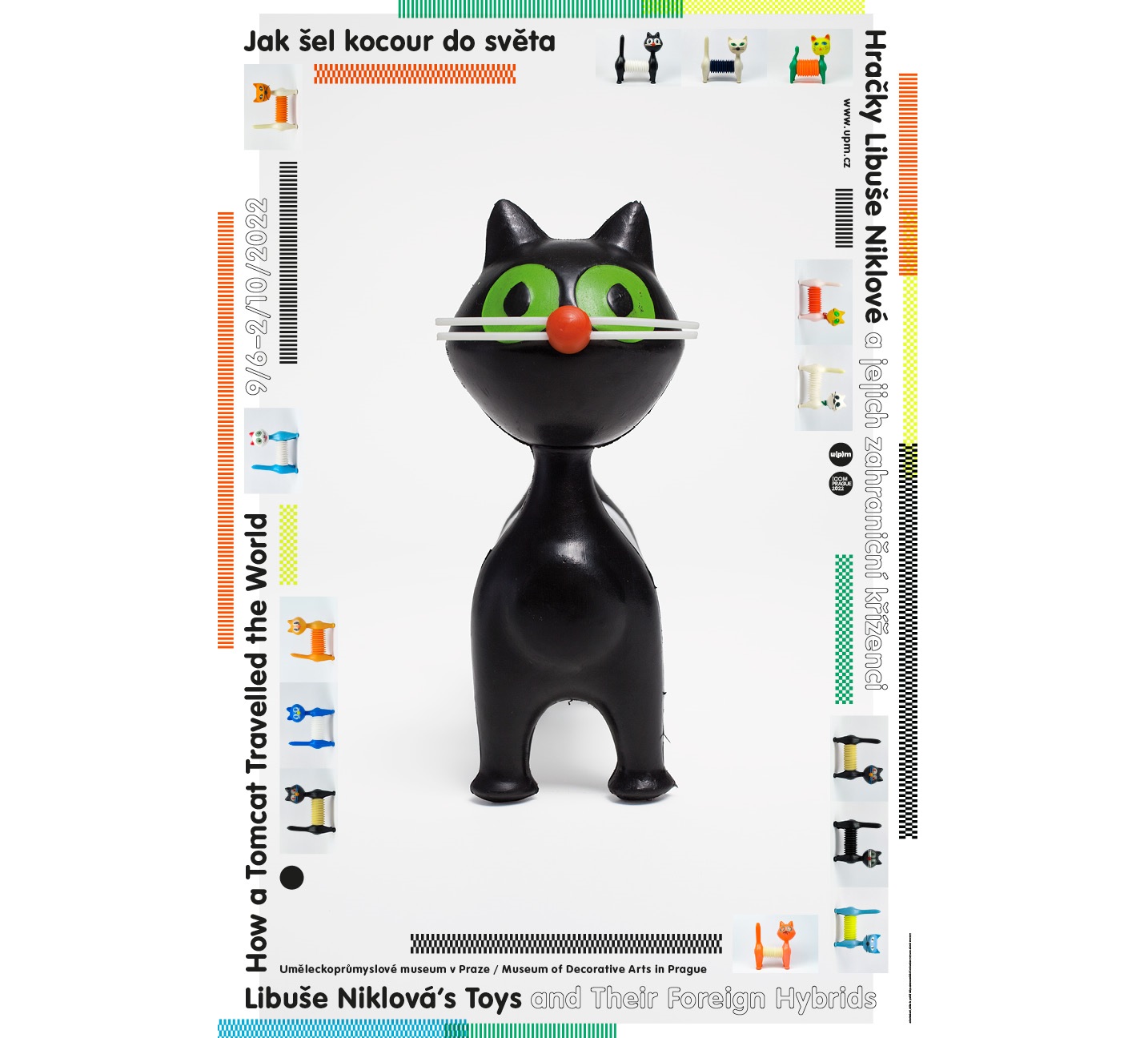
Museum of Decorative Arts, Prague
The first part of this discovery exhibition was presented by the Museum of Applied Arts in Prague from June 9 to October 2. The exhibition was organized on the occasion of the international museum conference ICOM Prague 2022. The exhibition was free and was visited by a large number of visitors from many countries around the world. Attendance can only be estimated, as the exhibition was located in the non-paying part of the museum. But all paying visitors also saw the exhibition, and there were 16,932 of them, as well as several hundred participants of the ICOM conference. According to estimates, there were at least the same number of non-paying visitors as paying visitors, so an estimated 35,000 visitors visited the exhibition.
- Date of event: June 9th, 2022 - October 2nd, 2022
- Venue: Museum of Decorative Arts, Prague
- Attendance: 35 000

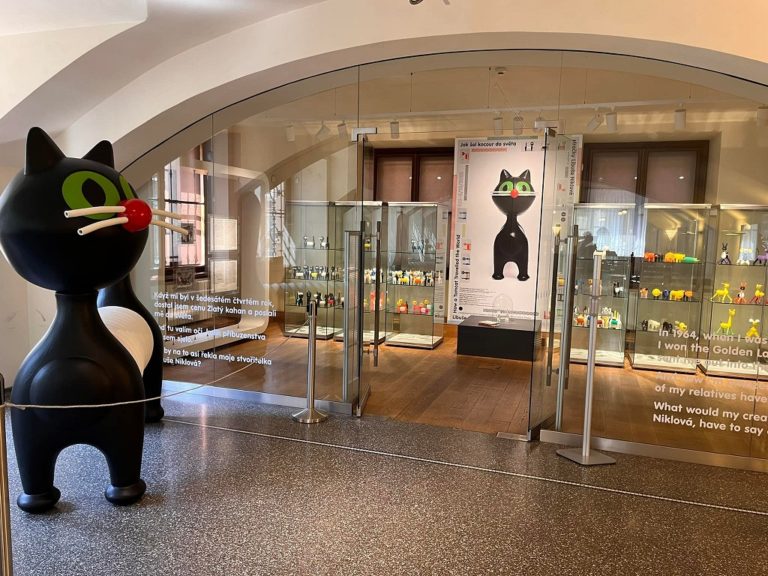
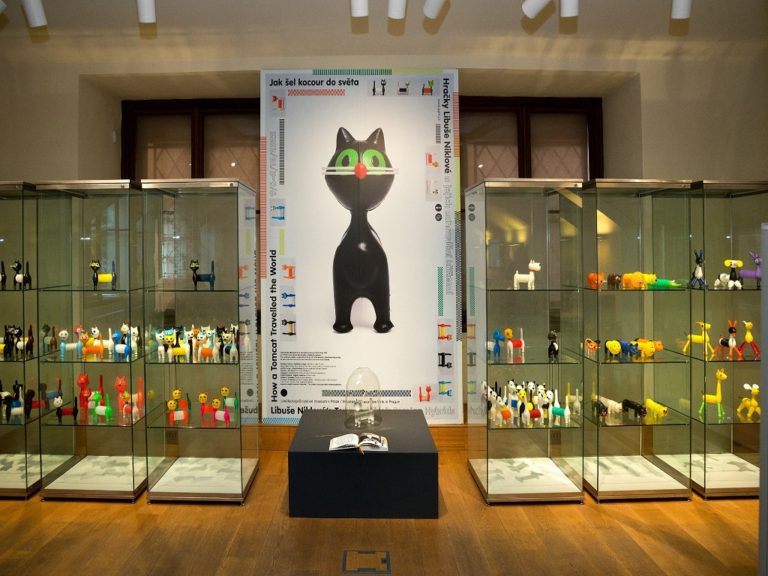
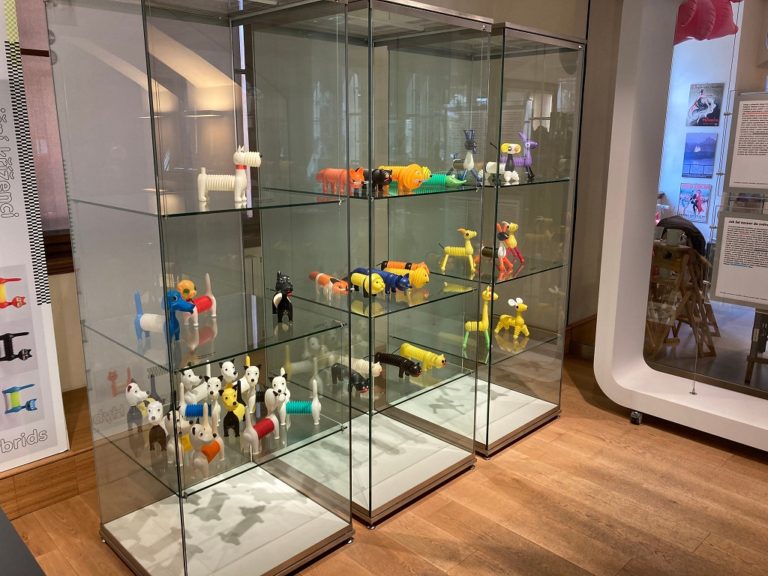

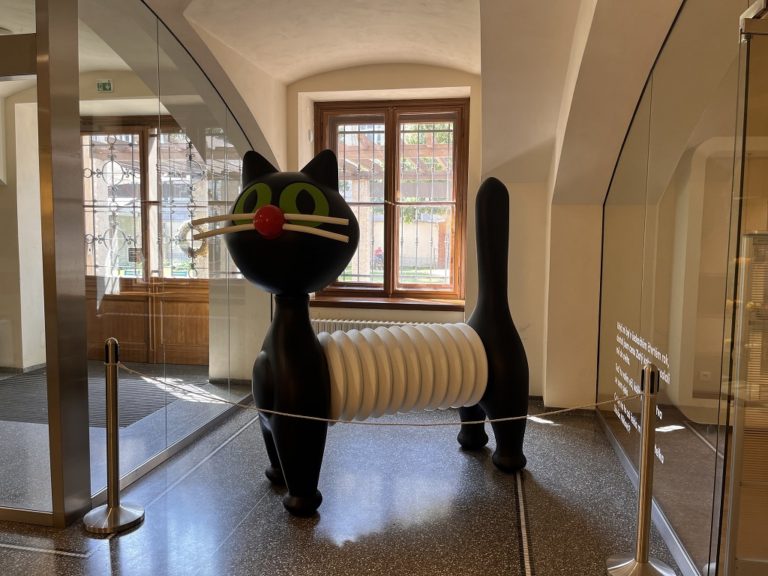
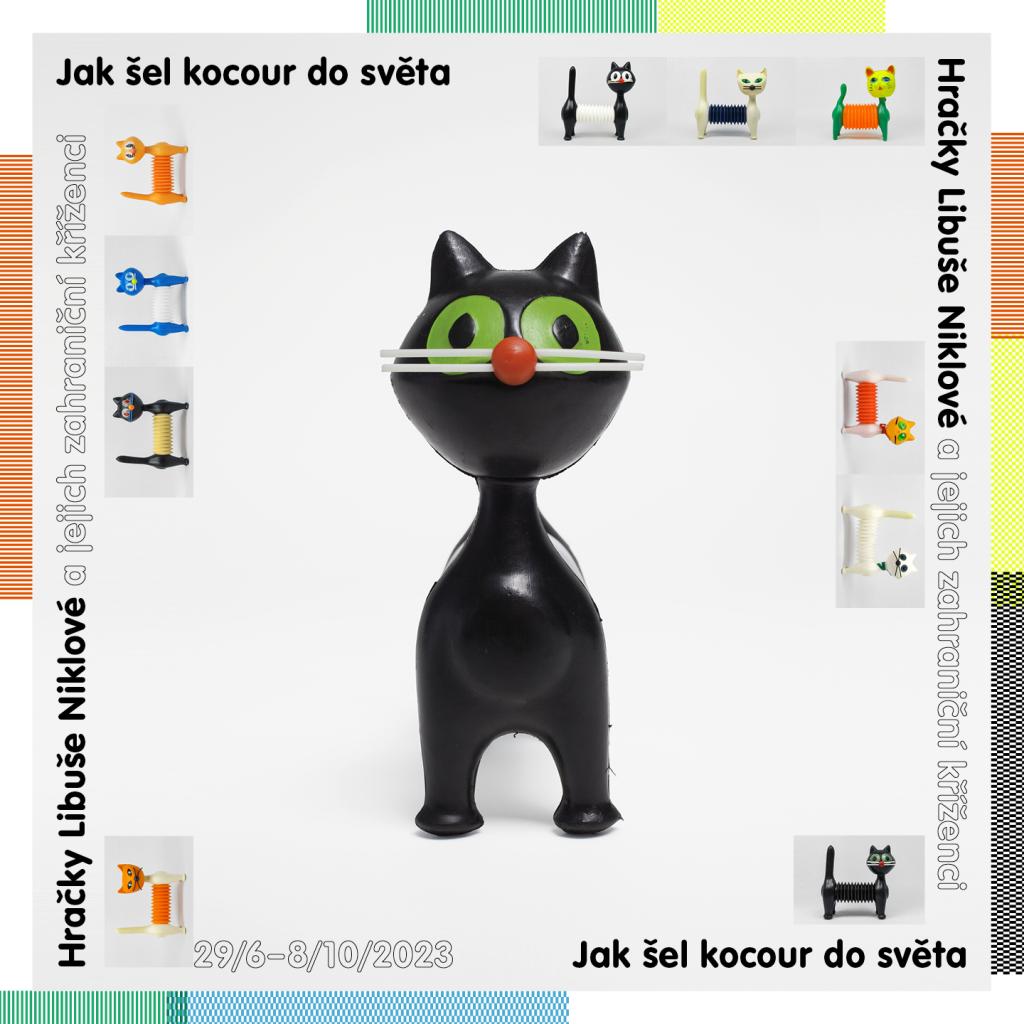
Muzeum Napajedla, Napajedla
The second part of this discovery exhibition was presented by the Napajedla Museum from June 29 to October 8. The exhibition in the city of origin of this famous cat presented several previously unknown mutations of cats and was seen by 1800 visitors.
- Date of event: June 29th, 2023 - October 8th, 2023
- Venue: Muzeum Napajedla, Napajedla
- Attendance: 1 800

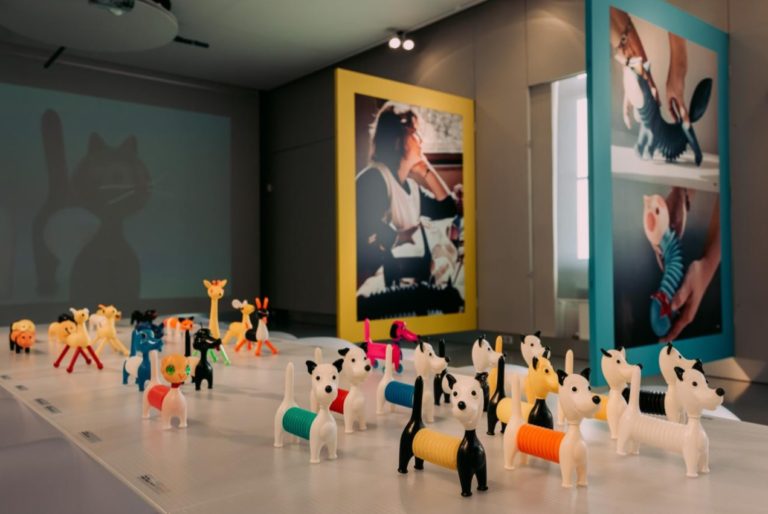
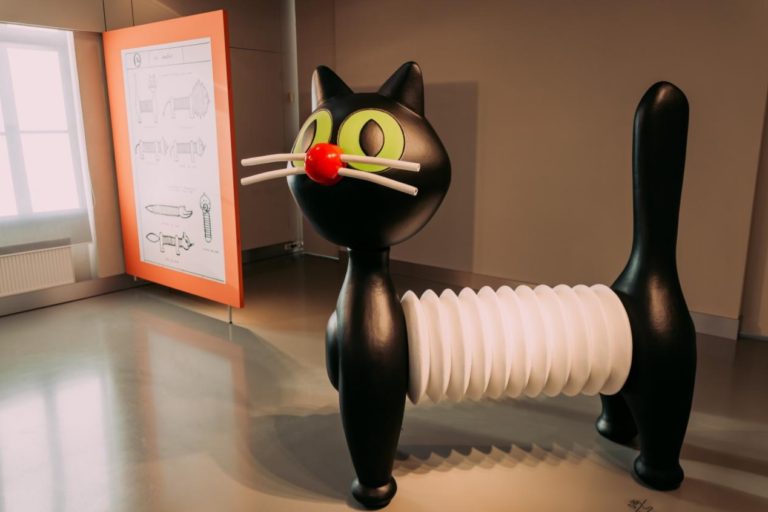
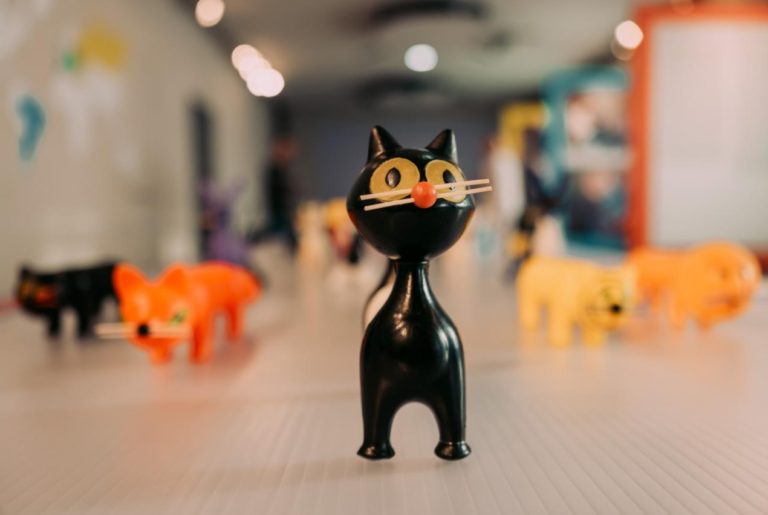
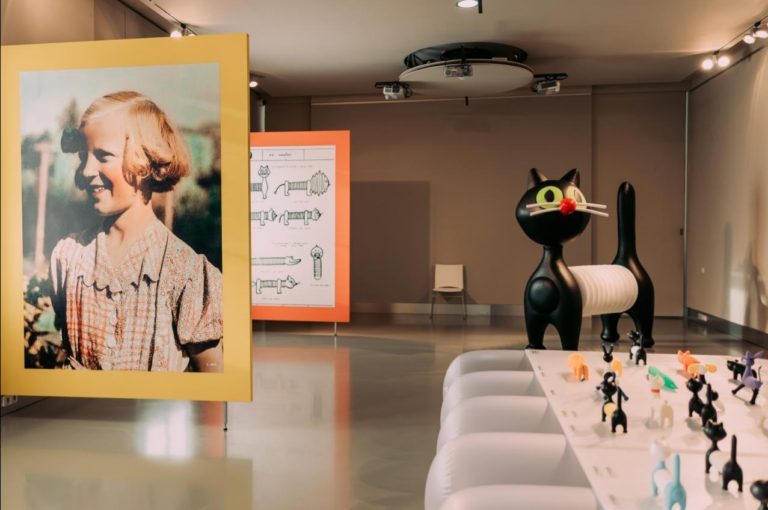
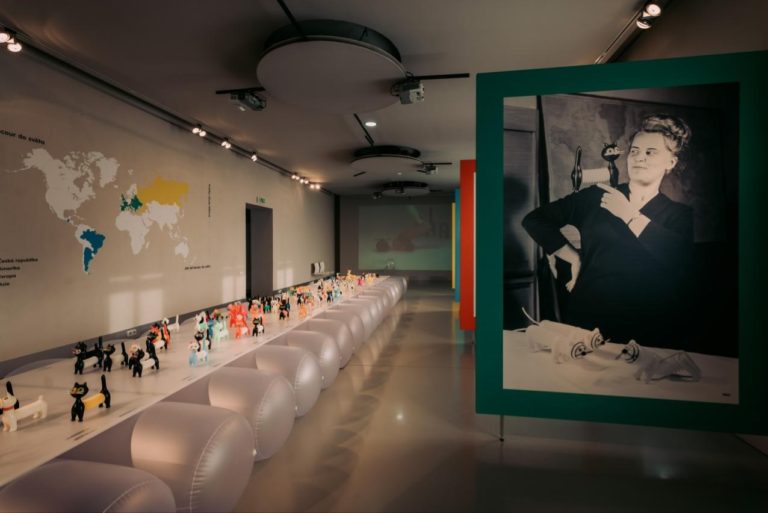
100 Years of Czech Design
It was the first ever exhibition in Japan that was devoted to Czech design and its history in such a broad way. The core of the exhibition was made up of objects from the collections of the Museum of Decorative Arts in Prague, starting with the work of Alfons Mucha and Czech glass and porcelain, through posters, furniture, toys to animated films and illustrated books. The exhibition presents Japanese visitors with around 250 exhibits that symbolize the best of Czech design. 12 toys by Libuše Niklová from our collection were also on display at the exhibition. Some in the main exhibition and some in the children’s corner.
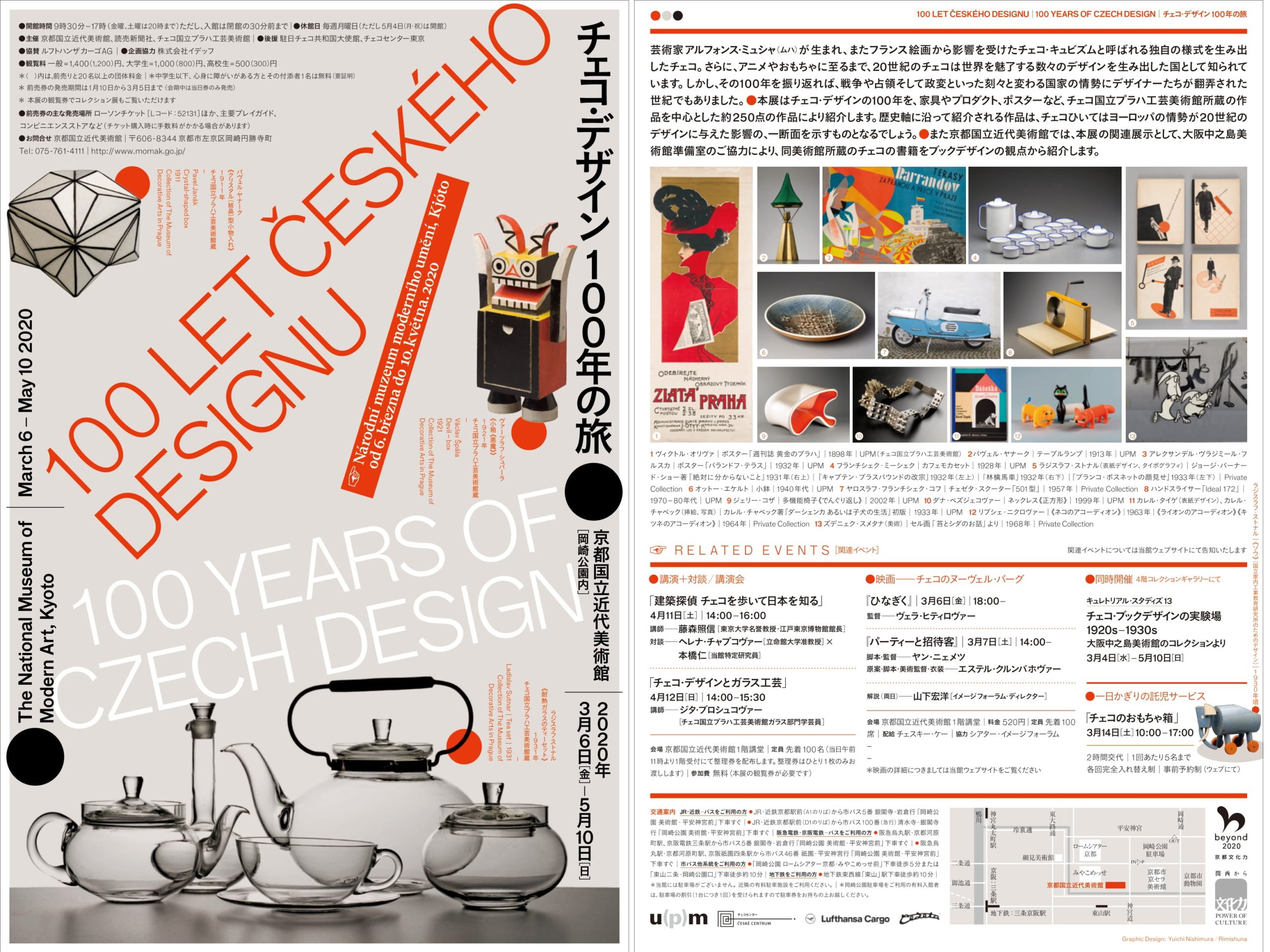
MoMAK, Kyoto, Japan
On May 26th, 2020, after a long break in the operation of the National Museum of Modern Art in Kyoto, the exhibition 100 years of Czech design was opened. The entire date of the exhibition has been moved, so visitors could come and see the best of Czech design until July 5th, 2020.
- Date of event: May 26th, 2020 - July 5th, 2020
- Venue: The National Museum of Modern Art, Kyoto
- Attendance: 11 899

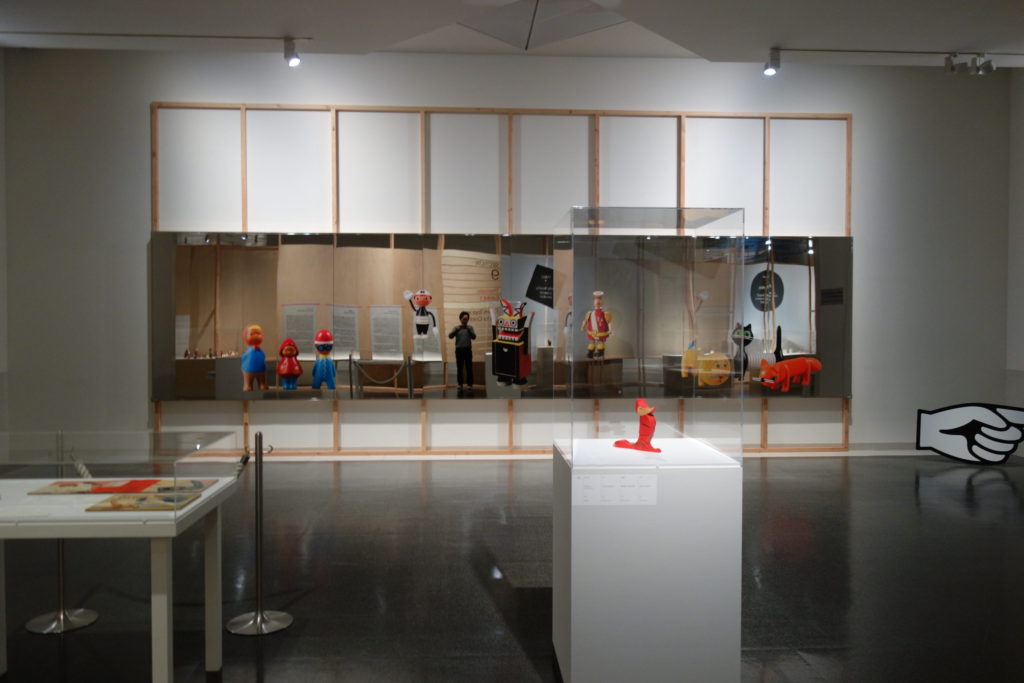
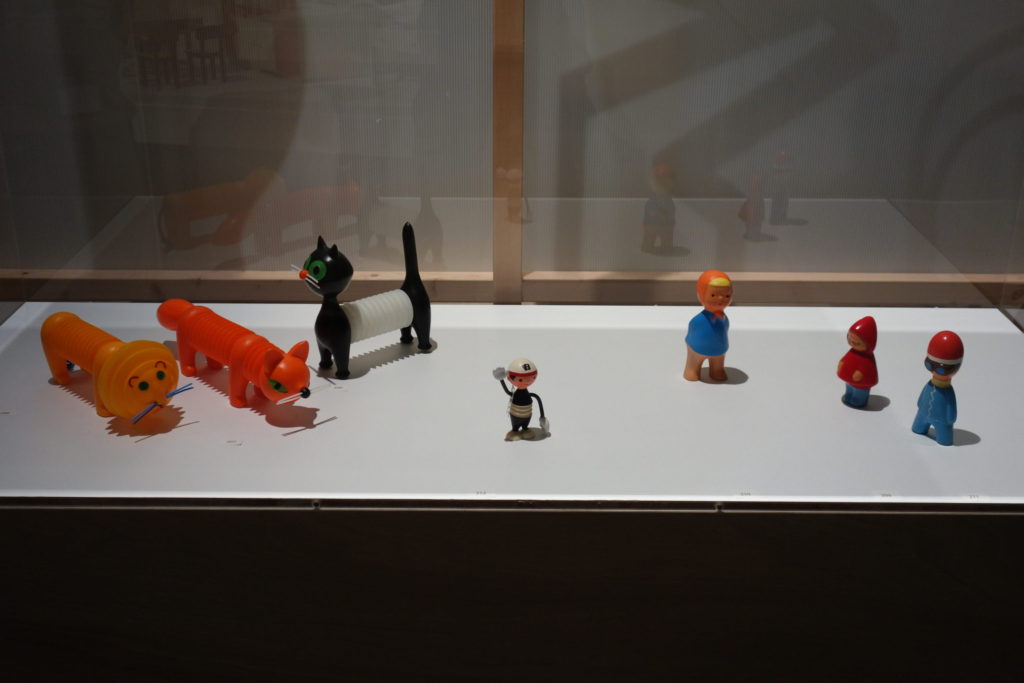
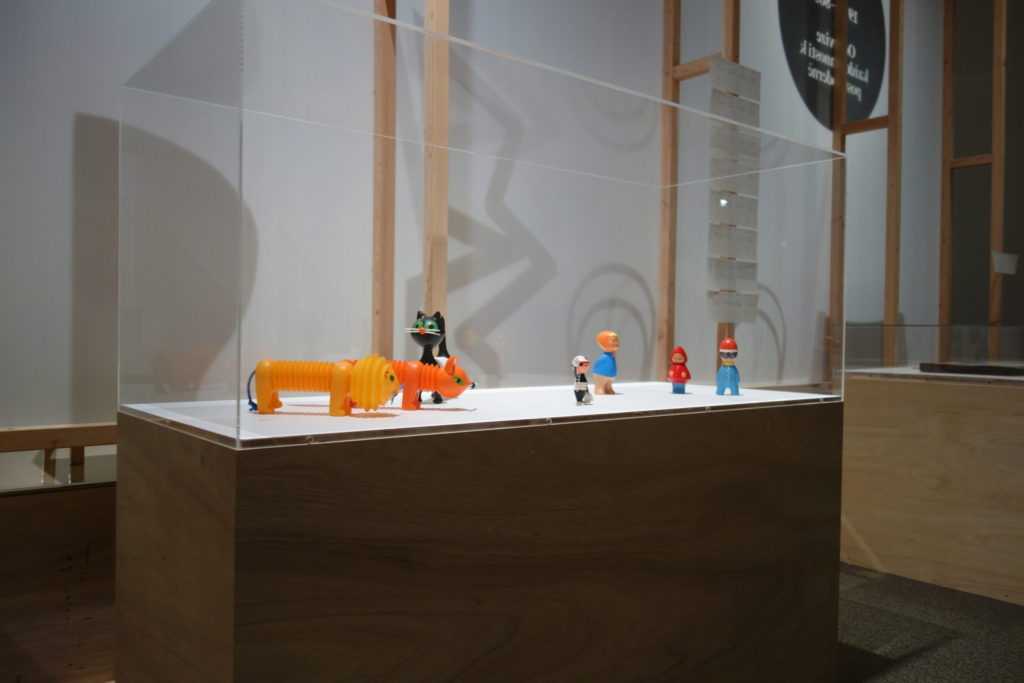
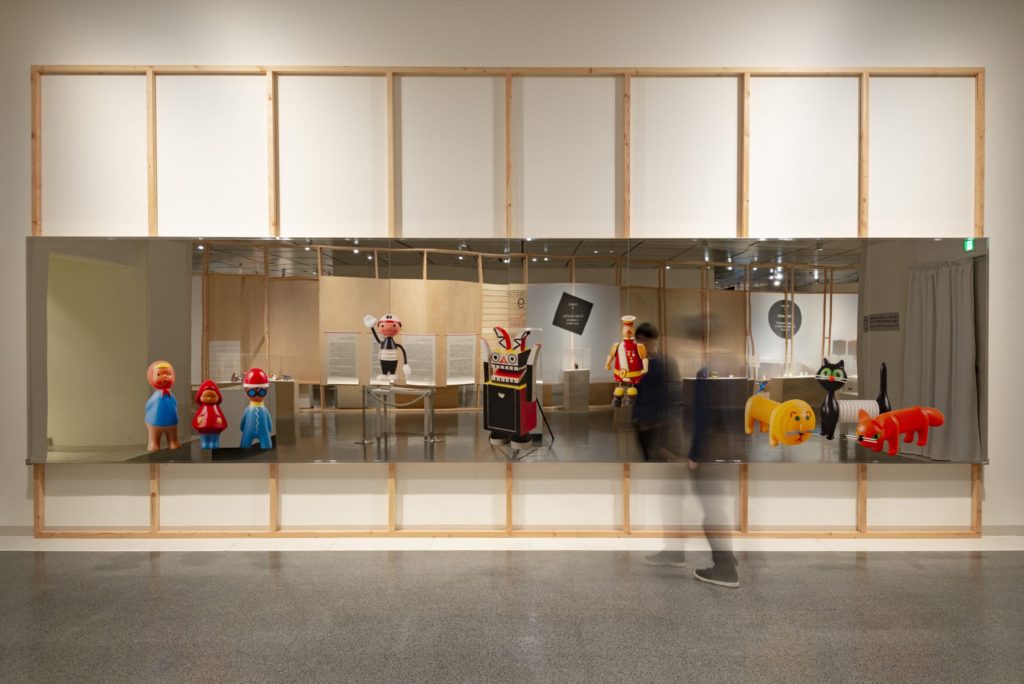
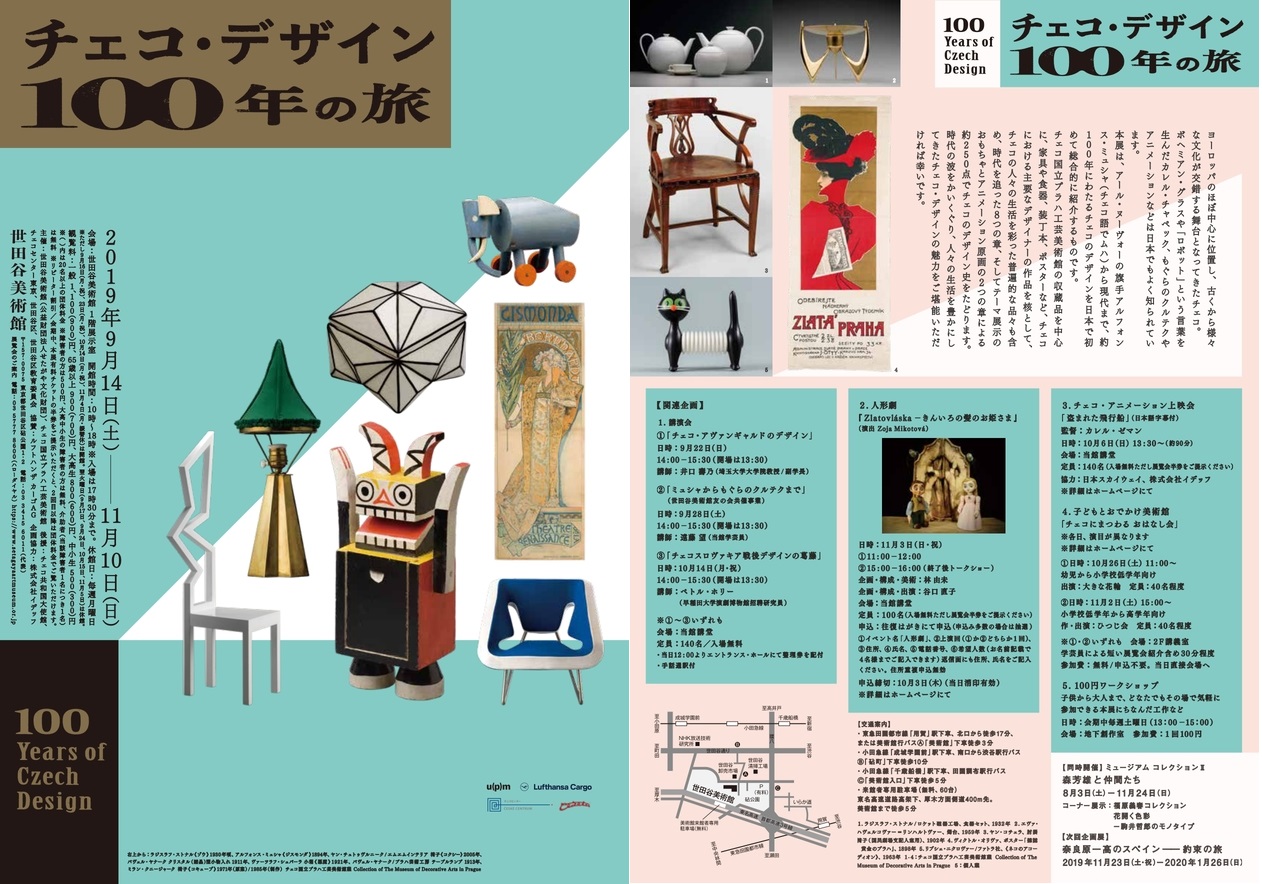
Setagaya Art Museum, Tokyo, Japan
The exhibition 100 years of Czech design, after being presented in the cities of Okazaki and Toyama, moved to Tokyo, where it was shown at the Setagaya Art Museum.
- Date of event: September 14th, 2019 - November 10th, 2019
- Venue: Setagaya Art Museum, Tokyo
- Attendance: 17 201
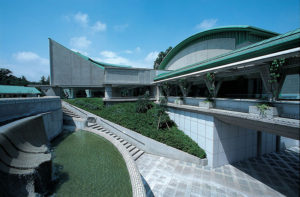
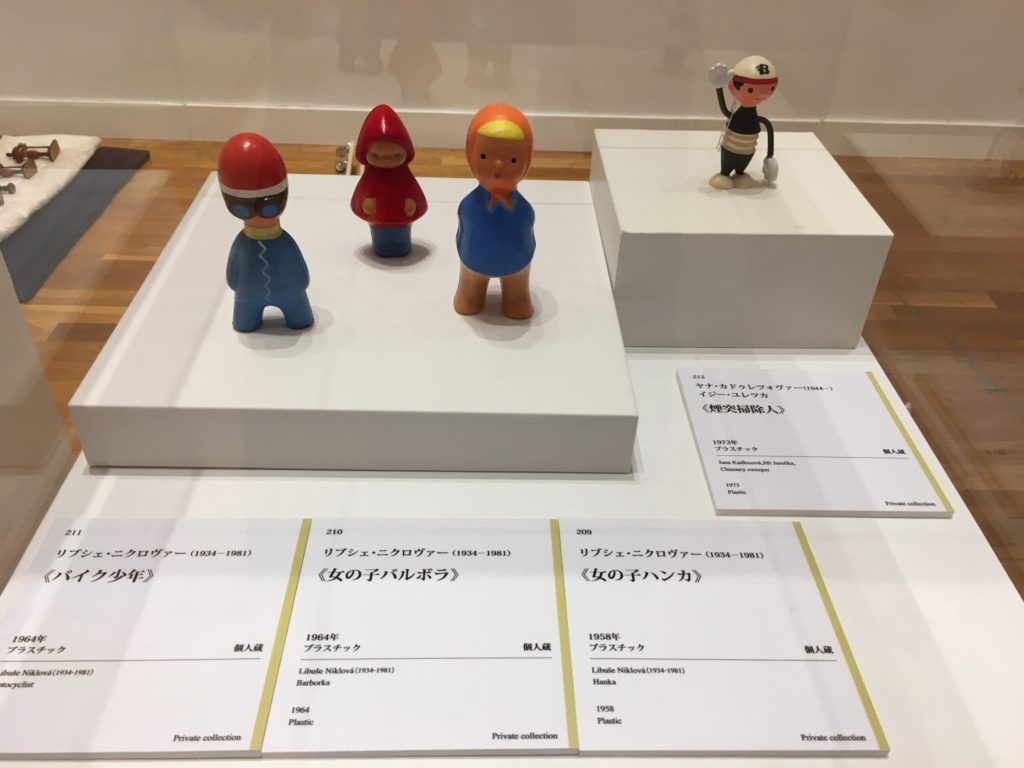
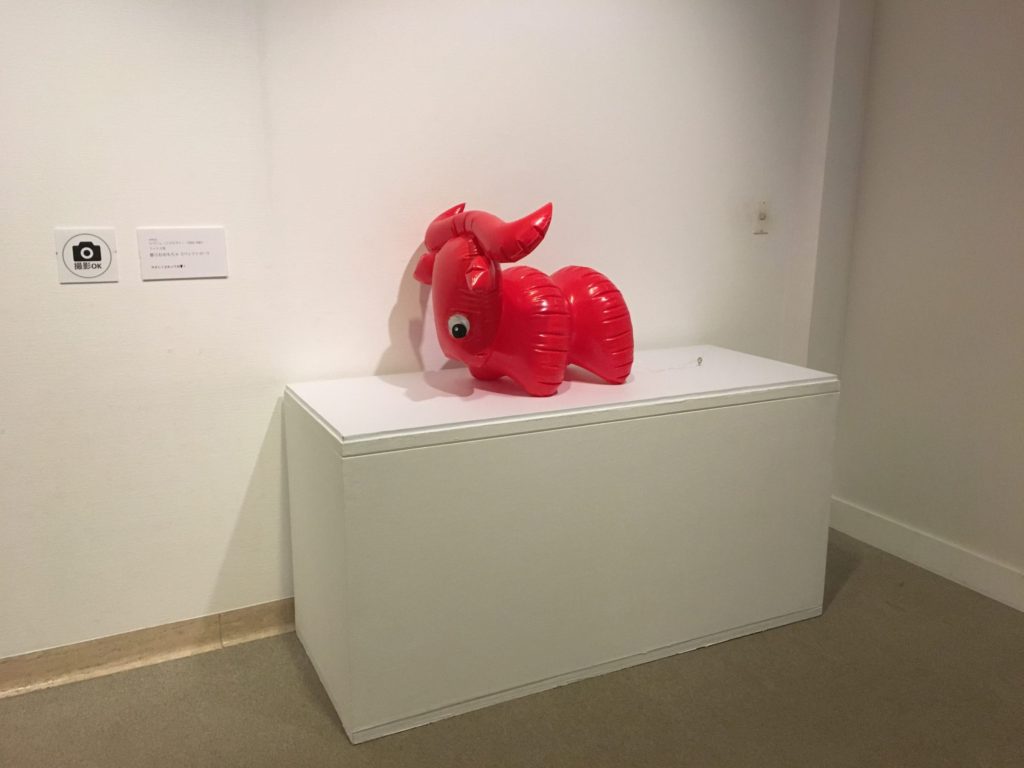
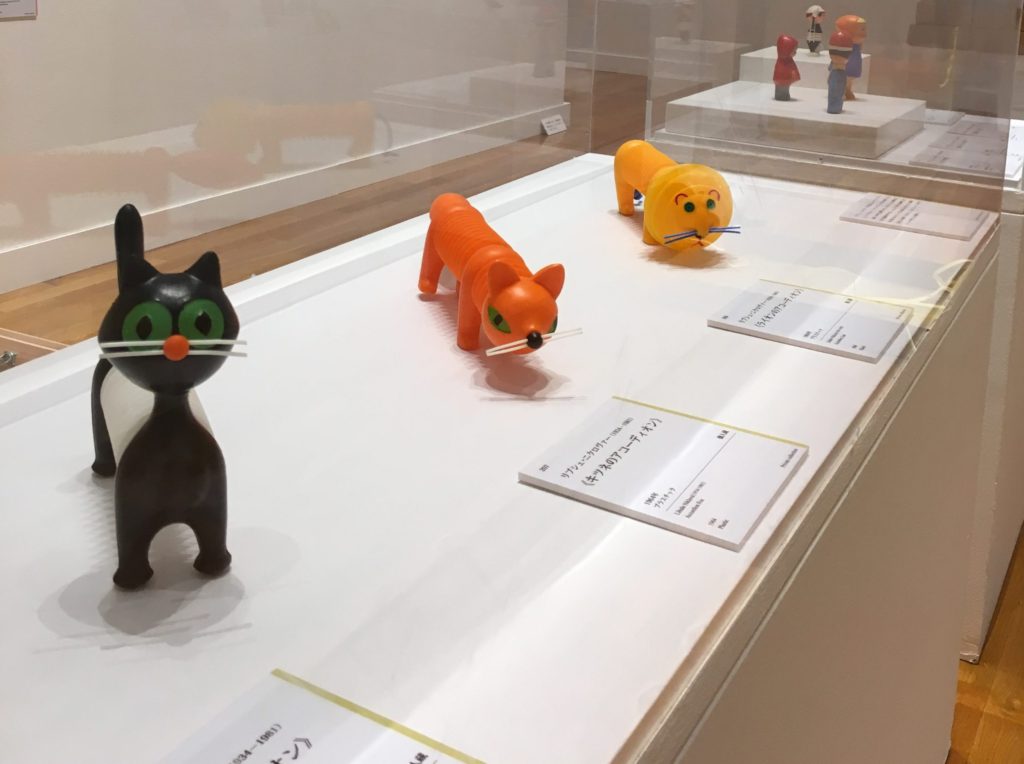
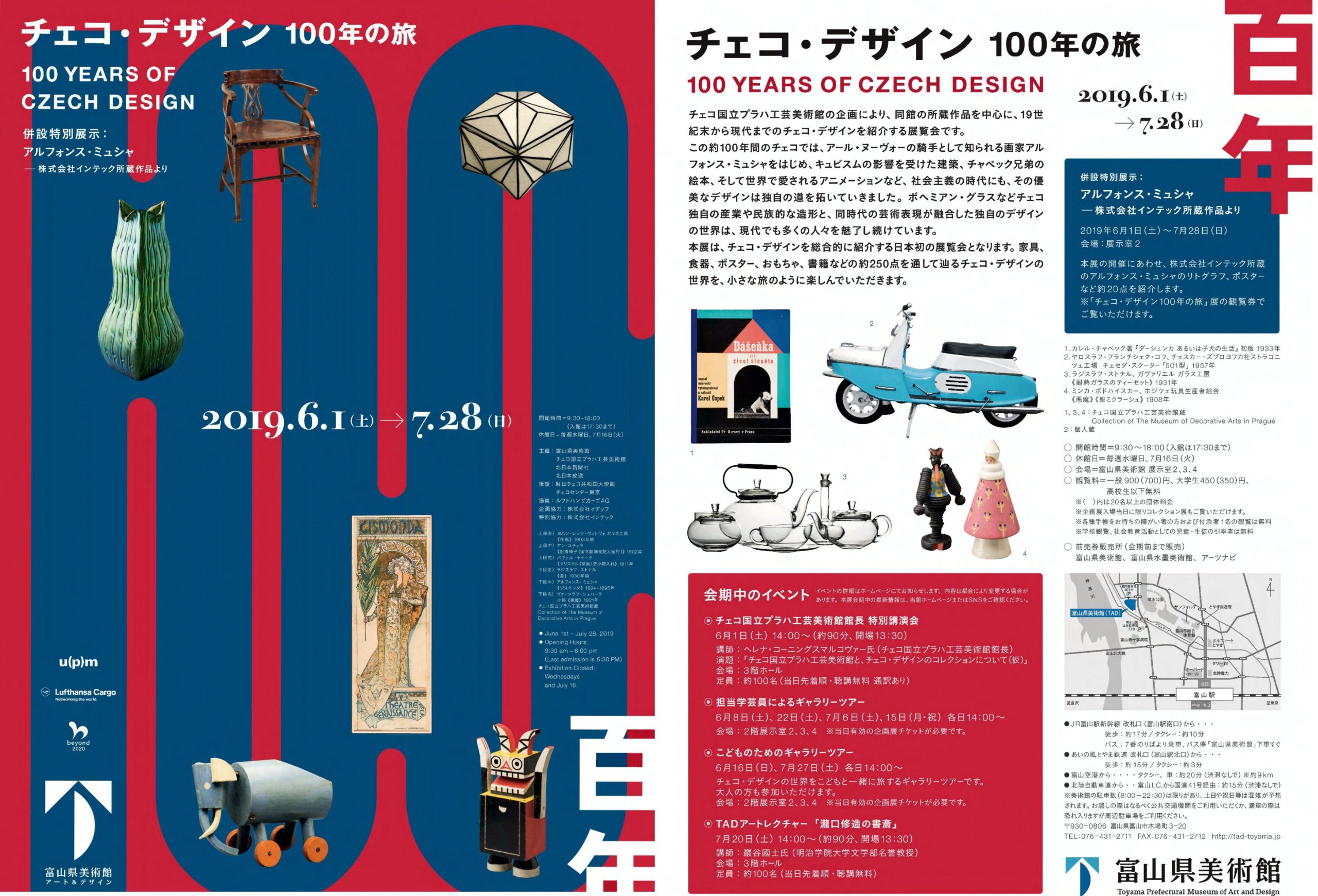
Toyama Prefectural Museum of Art and Design, Toyama, Japan
An exhibition called 100 years of Czech design moved to the Toyama Prefectural Museum of Art & Design after its success in Okazaki.
- Date of event: June 1st, 2019 - July 28th, 2019
- Venue: Toyama Prefectural Museum of Art and Design, Toyama
- Attendance: 13 851
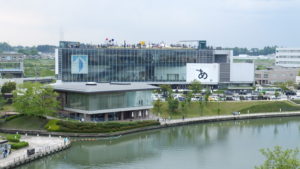
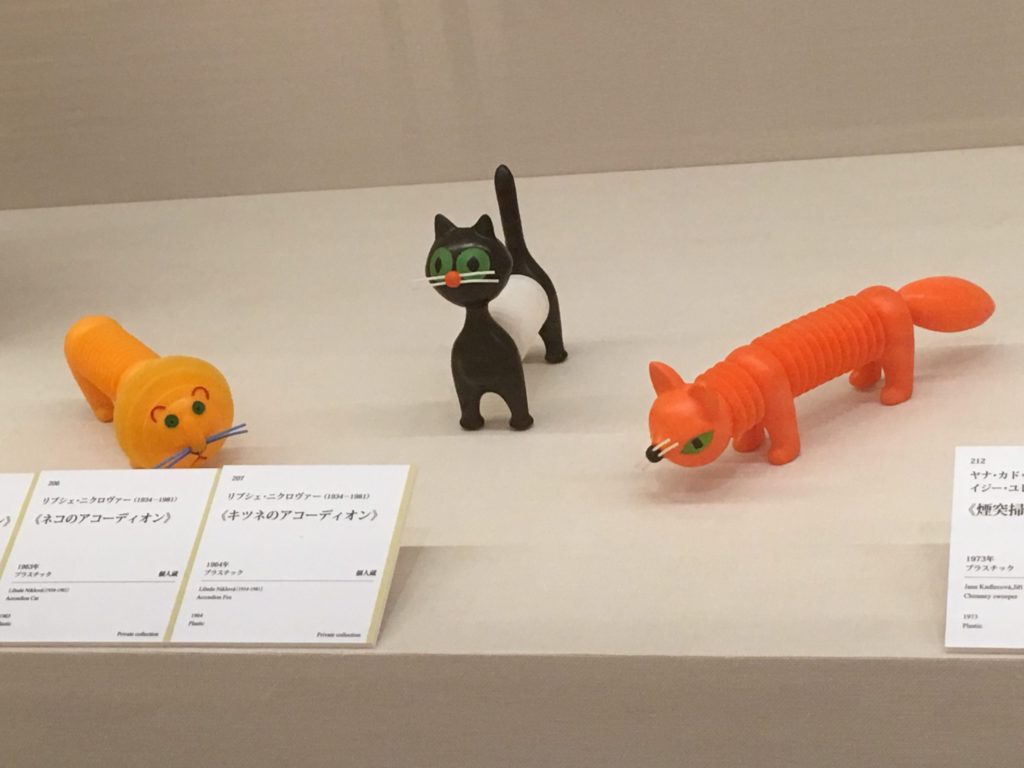
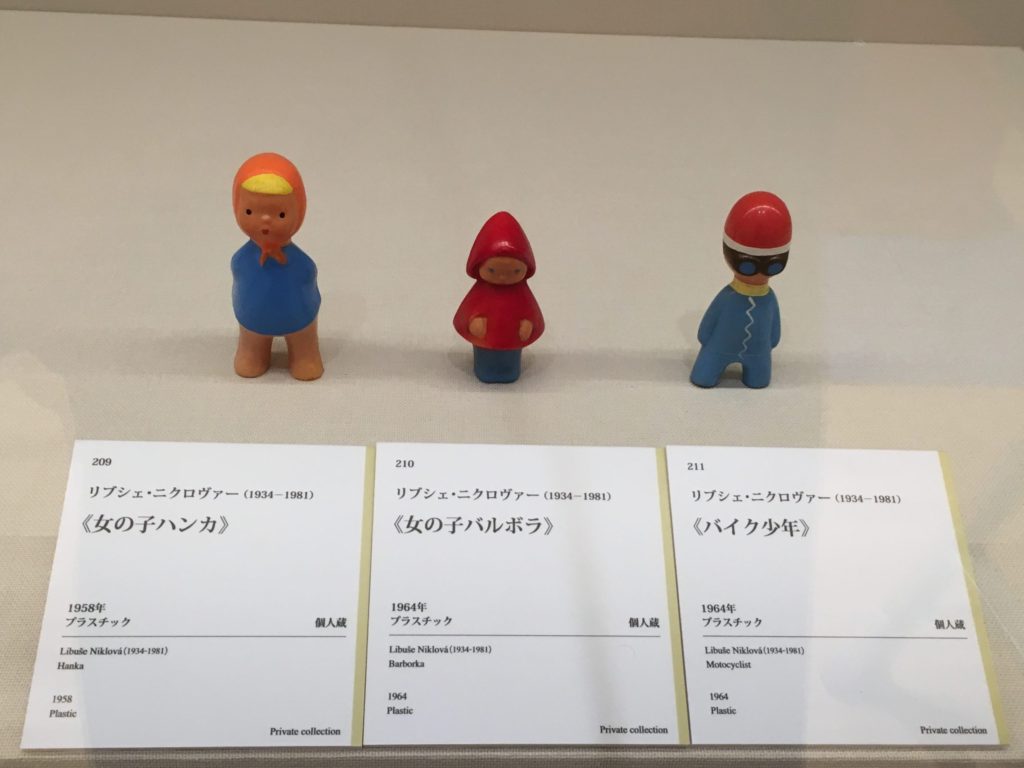
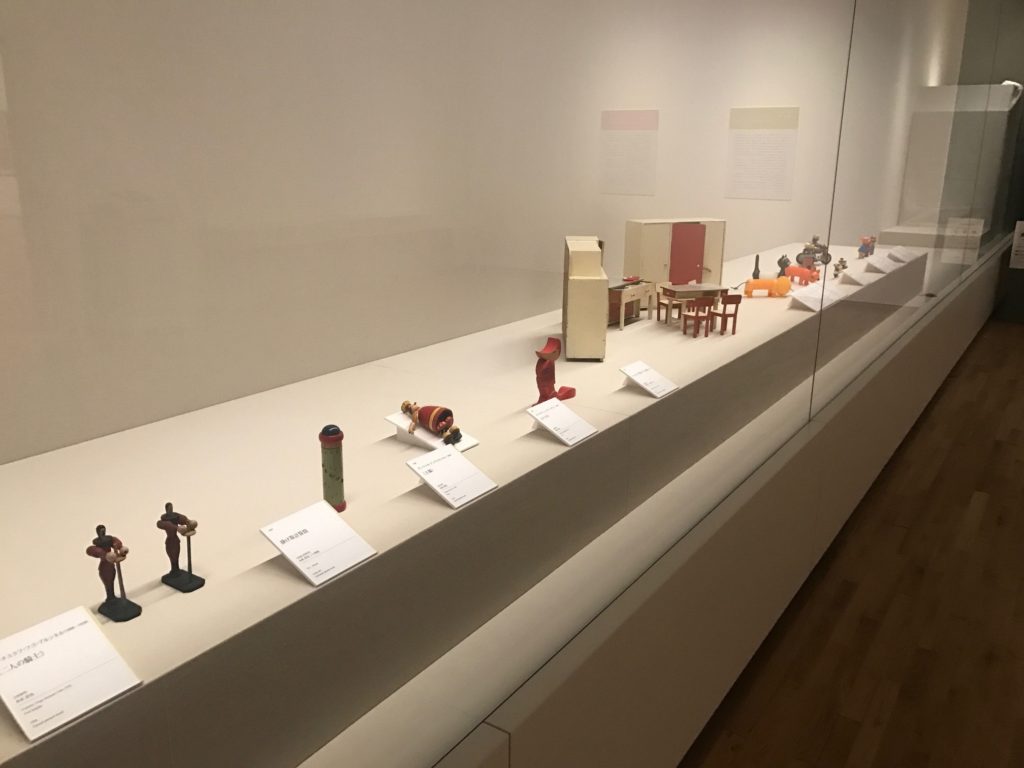
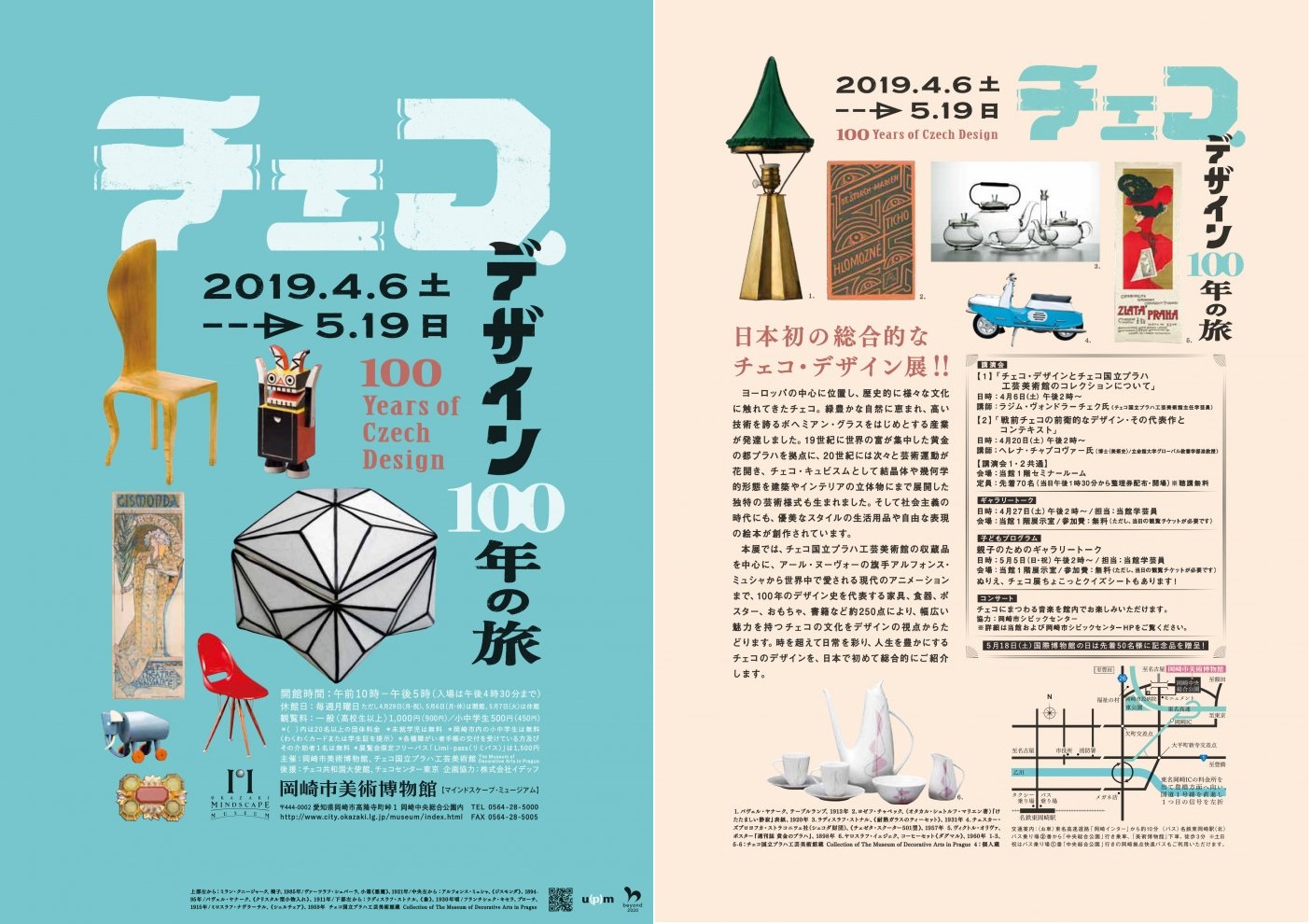
OkazakiCity Art Museum, Okazaki, Japan
In the city of Okazaki in Aichi Prefecture, from April 6th until May 19th. it was possible to visit an exhibition dedicated to the century-old history of Czech design.
- Date of event: April 6th, 2019 - May 19th, 2019
- Venue: OkazakiCity Art Museum, Okazaki
- Attendance: 6 817

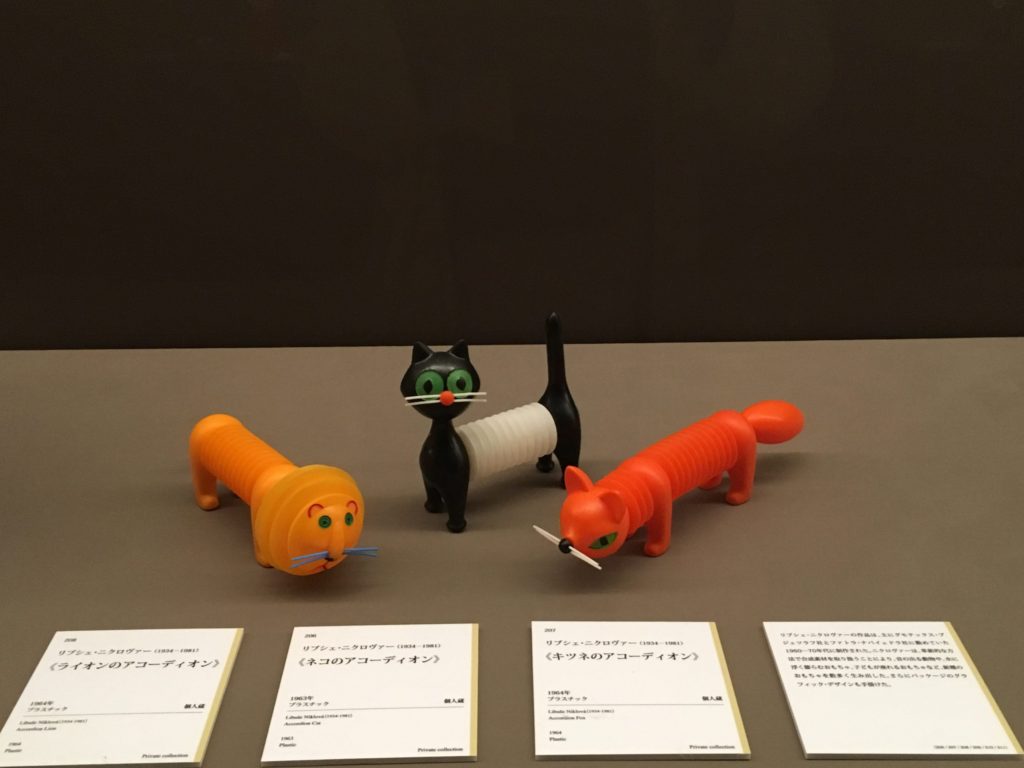
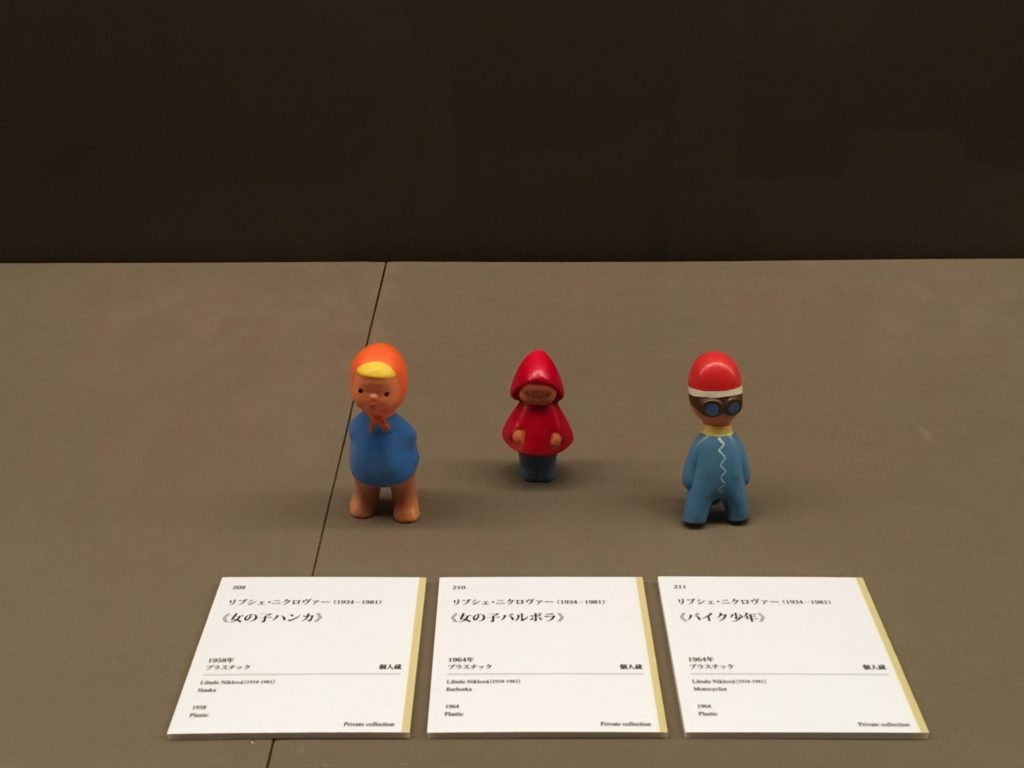
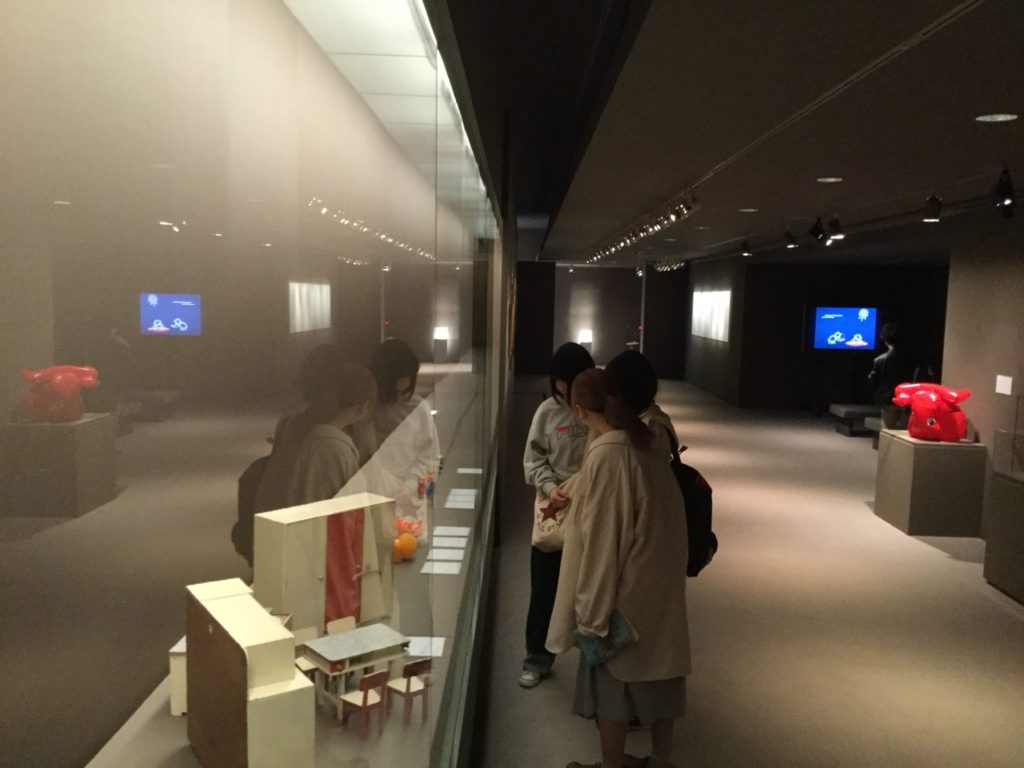
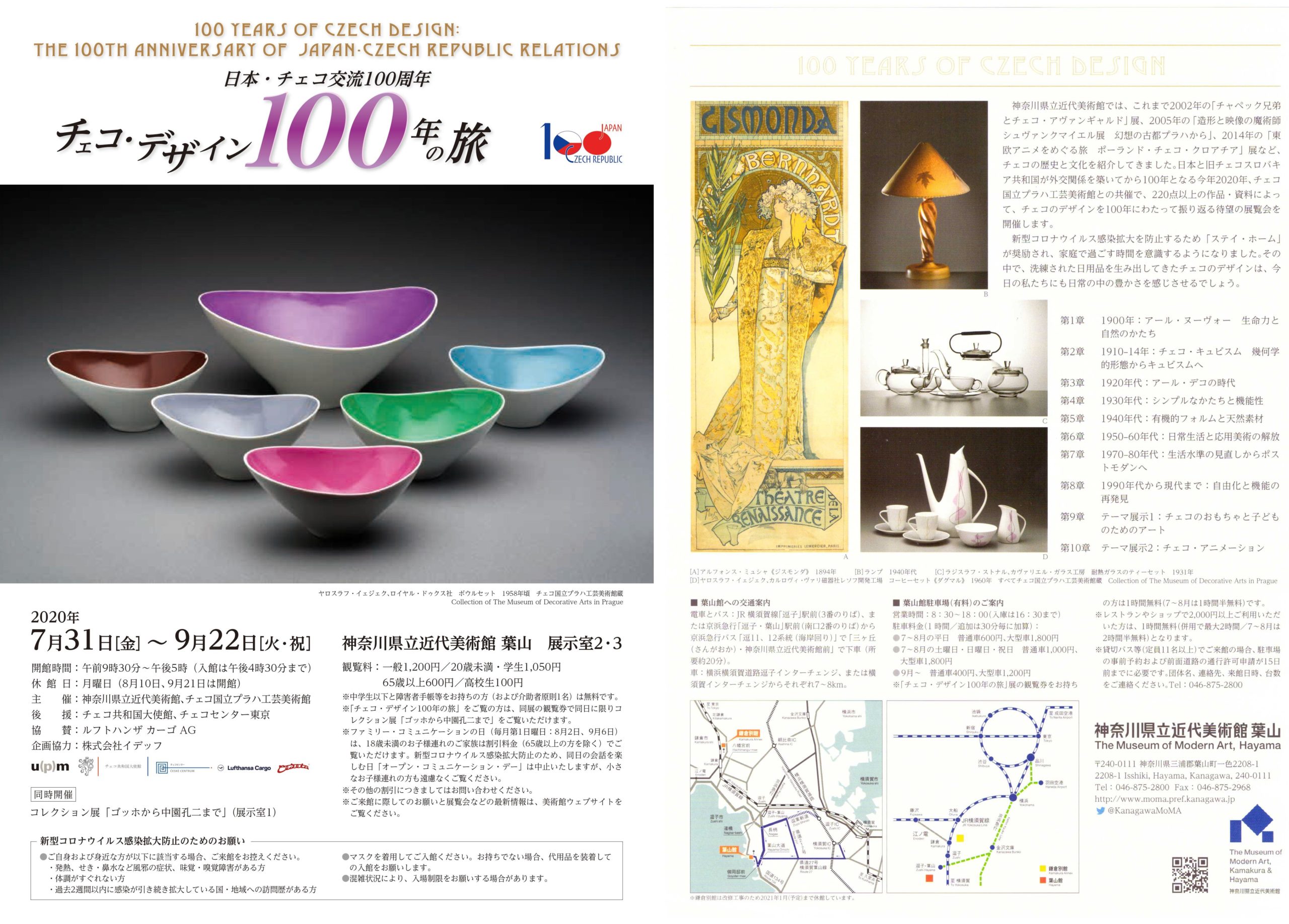
The Museum of Modern Art, Hayama, Japan
The popular traveling exhibition 100 years of Czech design moved from the Museum of Modern Art in Kyoto to Kanagawa prefecture, where it was from July 31st until September 22nd on view at the Museum of Modern Art in Kamakura and Hayama.
- Date of event: July 31st, 2020 - September 22nd, 2020
- Venue: The Museum of Modern Art, Hayama
- Attendance: 10 362

